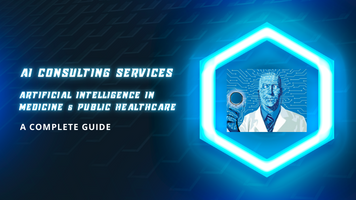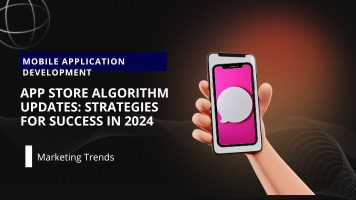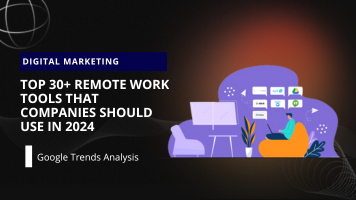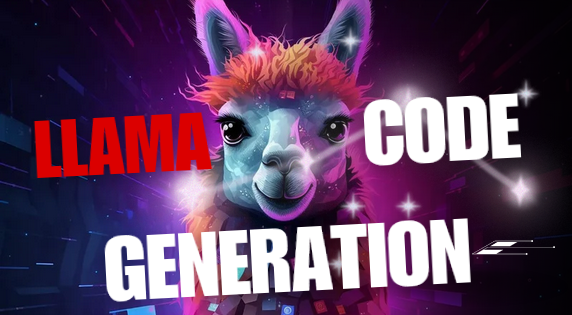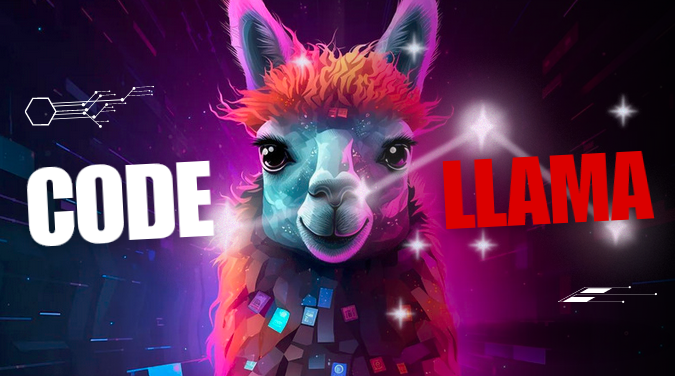Loveneet singh
Top 13 Free AI Tools / Apps for Students & Education [May 2024]
Are you searching for cutting-edge tools to elevate your educational experience? The integration of AI in education is transforming learning and teaching methods, making sophisticated educational tools more accessible. This post delves into the top 13 free AI tools and apps available for students in May 2024, which are essential for enhancing both teaching effectiveness and student performance.
With 90% of students preferring AI-driven study aids like ChatGPT for students over traditional tutoring methods, and about 50% of teachers utilizing AI for lesson planning (as reported by EdWeek), the benefits of these tools are clear. They offer personalized learning environments and real-time feedback, crucial for educational success. Join us as we explore these free AI resources that promise to revolutionize the educational landscape, providing you with the most innovative solutions at your fingertips.
Some interesting stats on using AI in classroom
- 60% of teachers use AI in their classrooms (Forbes)
- 47% of learning management systems will have AI capabilities by 2024 (Business Today)
- 67% of secondary school students in the UK use AI tools (Cryptopolitan)
- By 2030, AI will automatically score 50% of college essays and nearly all multiple-choice examinations (MMC Global)
- 56% of college students have used AI tools to complete assignments or exams (Turnitin)
- 49% of students actively used AI writing tools during Fall 2023 (Turnitin)
- 58% of university students in Australia are using AI during their studies (Coefficient)
Understanding AI in Education
In educational settings, AI tools fulfill several important functions designed to enhance teaching and learning experiences.
One primary function is AUTOMATED GRADING, where AI can rapidly and effectively evaluate student assignments, providing quick feedback. It expedites the grading process and allows educators to spend less time on administrative tasks, and more time on teaching.
Additionally, AI supports personalized learning by using DATA-DRIVEN INSIGHTS to analyze individual learning behaviors. This analysis enables AI systems to customize educational content to match each student's unique learning pace and style. It significantly boosts academic engagement and outcomes.
Another vital role of AI is ANALYTICS, which utilizes extensive data to offer insights into student performance and educational trends. These insights help educators make informed decisions that improve teaching strategies and learning materials. It enhances overall student performance.
Now, let’s have a quick look at the top 13 Educational AI Tools for Students in 2024
Top 13 AI EdTech Tools in 2024
1. ChatGPT- 4o
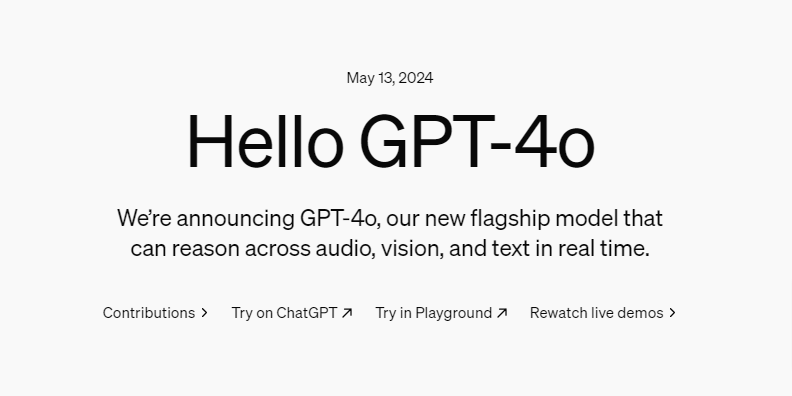
ChatGPT 4o, an advanced iteration of OpenAI's language models, was introduced as part of OpenAI's ongoing efforts to enhance AI capabilities. It builds on the success of previous models like GPT-4 and GPT-3.5, aiming to offer faster and more affordable AI solutions.
The launch of ChatGPT 4o is part of a broader strategy to deploy increasingly sophisticated and safe AI systems through iterative updates and extensive testing. OpenAI has consistently rolled out updates and improvements, including the introduction of GPT-4 Turbo, a more cost-effective and efficient version of GPT-4, around the same time.
This fine-tuned version offers a wide range of applications in education, providing personalized learning experiences, tutoring assistance, enhanced writing skills, language learning support, research assistance, professional development for educators, accessibility and inclusivity features, and collaborative learning tools.
Top Features of ChatGPT 4o
The features of GPT-4.0 present several benefits for students, enhancing both their learning experiences and academic performance:
- Real-time voice conversations:
- Benefits: This feature allows GPT-4.0 to engage with students through voice, making it ideal for auditory learners and those who benefit from verbal reinforcement. Students can have interactive discussions on complex subjects, receive spoken explanations of difficult concepts, or practice language skills in a conversational setting. This real-time interaction can also help improve students' presentation and public speaking skills by providing immediate feedback on pronunciation, fluidity, and style.
- Multimodal content creation:
- Benefits: GPT-4.0's ability to create diverse forms of content from different prompts aids students in multiple ways. For instance, it can help generate creative writing, code, or even musical compositions based on student inputs. This capability supports a broad range of academic activities, from creative arts to technical sciences, making it easier for students to engage with subjects creatively and effectively. It also aids in developing critical thinking and creative problem-solving skills by interpreting and translating abstract concepts into various media.
- Image and audio interpretation:
- Benefits: The capacity to analyze and interpret images and audio enhances learning by incorporating visual and auditory materials into study sessions. Students can use this feature to gain deeper insights into visual arts, history, or cultural studies by analyzing imagery or historical documents. Similarly, in subjects like music or linguistics, audio interpretation helps in better understanding content structure, patterns, and theoretical applications. This feature also supports students with disabilities, such as visual impairments, by describing and interpreting visual content.
- Faster processing:
- Benefits: The fast processing speeds of GPT-4.0 ensure that students receive immediate responses to queries, which is crucial for maintaining engagement and flow in learning environments. This swift interaction mimics a natural conversational pace, helping to sustain student attention and interest. It also allows for more dynamic and responsive educational interactions, making learning more efficient and less time-consuming.
ChatGPT4.o Pricing
- ChatGPT Plus: Subscribers pay $20 per month to access the enhanced features of ChatGPT 4o, which includes faster response times and priority access to new features and improvements.
- GPT-4 API Access: OpenAI charges $0.03 per 1000 tokens for the initial text (prompt) and $0.06 per 1000 tokens for the generated text (completion) for the 8192-token context window. For the 32768-token context window, the prices are doubled.
2. Fetchy - Best AI Tool For Teachers

Fetchy is an effective AI tool for education, offering more than 50 productivity tools designed to raise instructors' proficiency and productivity. Teachers may focus on more significant responsibilities by streamlining time-consuming processes like creating compelling lesson plans - All with this AI tool.
Moreover, teachers can make better decisions and manage their time more effectively.
Top Features
- Offer Multiple Resources - Fetchy provides customers with multiple educational resources that address many facets of learning. These resources assist educators in realizing their full potential and foster social, cognitive, affective, and psychomotor growth.
- Simplifies Lesson Planning - Additionally, the application simplifies lesson planning so educators may quickly and easily build interesting lesson plans. The capability of bespoke exams aids in tracking and measuring student development and offers immediate feedback on each student to pinpoint areas of strength and weakness.
- Expert Advice and Support - Teachers can use its expert guidance and support services to get practical insights from seasoned professionals. By using the available content modification function, tutors can also produce instructional materials that specifically target the needs of their scholars such as increased comprehension or engagement.
Fetchy Pricing
Fetchy has just one option, which costs $10 a month. However, if you want to give it a try before committing completely, a 7-day free trial option is available.
3. Quizlet - Top AI Tool For Students

Quizlet is a popular AI-powered study application that assists students in effectively retaining knowledge. It offers a range of study modes, including flashcards, matching games, and quizzes, to enhance learning and engagement. With over 500 million study sets, Quizlet covers various subjects, making it a versatile tool for students of all ages.
Top Features
- Interactive Study Tools: Quizlet provides various study modes, such as Flashcards, Learn, Mgic Notes, Text, and Textbook Solutions, to make learning fun and effective.
- Customizable Study Sets: Students can create their own study sets or choose from millions of existing ones, covering various topics and subjects.
- Audio Feature: The Text-to-Speech feature reads out loud the terms and definitions, aiding auditory learners and those who prefer hearing the information.
- Progress Tracking: Quizlet tracks students' progress, providing insights into their learning journey and helping them identify areas that need improvement.
- Collaboration: Students can collaborate with peers, sharing and comparing study sets, and even competing in games, fostering a social and interactive learning experience.
Quizlet Pricing
Quizlet offers a free version with basic features and a Quizlet Plus plan for $35.99 per year, providing ad-free studying, additional study modes, and enhanced customization options.
4. Consensus - AI Tool For Researchers
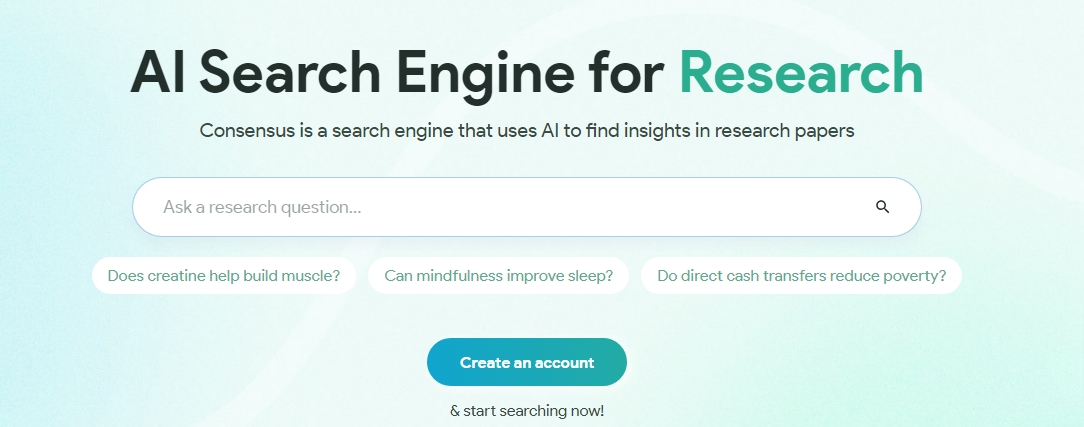
One of AI's biggest drawbacks is that it occasionally yields inaccurate information in response. It is troublesome because the last thing you want to be concerned about is the possibility that you are carrying false information with you.
One of the best AI tools for education to address this problem is consensus. It responds to any research questions and provides proof (such as journal excerpts) to support its accuracy. In this manner, you can be sure of the data you get.
You can easily export these responses and share them with others via social media or SMS. Let's examine some of its best attributes.
Top Features
- Quick Access To The Research Papers - You can quickly access journal and scientific research papers using Consensus. It saves time, particularly for students who are writing literature reviews for dissertations. The tool offers evidence from reliable sources based on relevancy and is free of advertisements.
- Vast Database - One of its best attributes is its vast database that covers a wide range of subjects. You may find solutions in every area, including technology, finance, and health.
Consensus Pricing
Consensus is available on three distinct plans:
- Free
- Premium Plan: Monthly cost of $9.99
- Enterprise: Get a quote for a tailored bundle.
5. Brainly - AI Tutor & Test Prep Tool
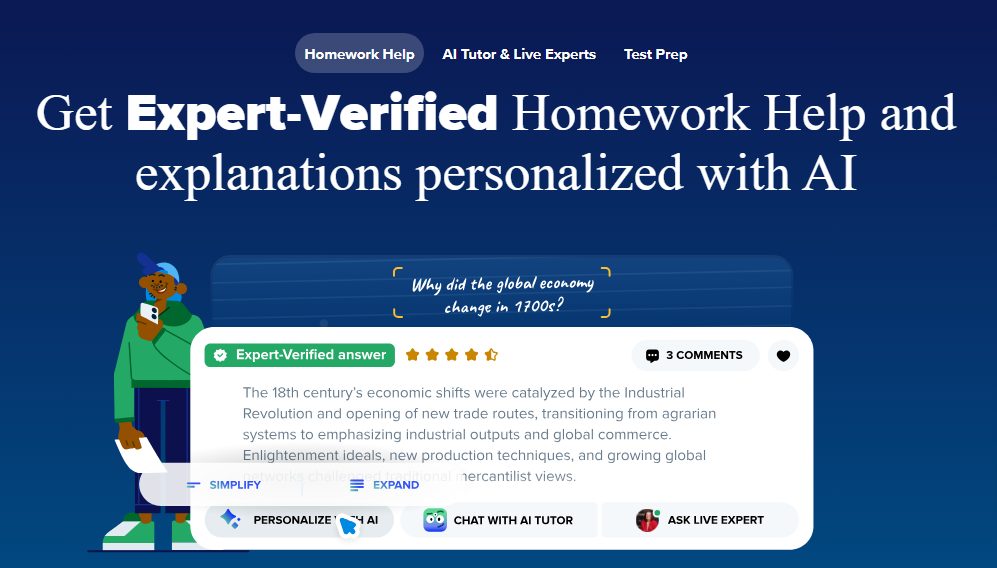
Brainly is a global online learning community that connects students, parents, and teachers to help solve academic problems and share knowledge. With over 350 million monthly users, Brainly is a go-to resource for collaborative learning and homework help.
Top Features
- Q&A Community: Brainly users can ask questions on any subject and receive answers from a community of peers and experts. This collaborative learning approach fosters knowledge sharing and critical thinking.
- Subject Matter Experts: The platform has a team of verified subject matter experts who provide reliable and accurate answers, ensuring the quality and credibility of the information shared.
- Interactive Learning Tools: Brainly offers a range of interactive learning tools, such as flashcards, study guides, and quizzes, to make learning more engaging and effective.
- Real-time Help: Students can connect with peers and experts in real time to get instant clarification on complex topics or homework questions.
Brainly Pricing
Brainly offers a basic free version with access to the Q&A community and limited features. For enhanced capabilities, users can subscribe to Brainly Plus, which costs $9.99 per month or $79.99 per year. Brainly Plus includes additional benefits such as faster answers, step-by-step explanations, and priority support.
6. Socratic by Google - Learning Resource For Students
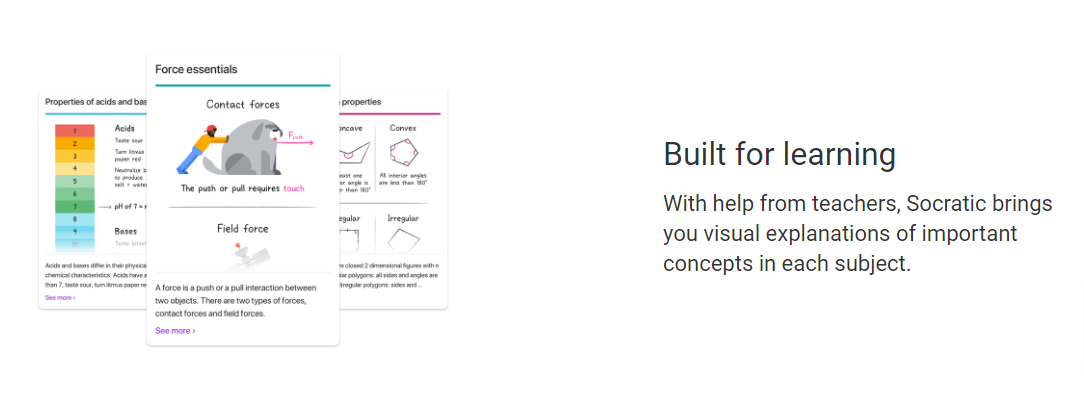
Socratic, developed by Google, is an AI-driven learning app that acts as a personal tutor for students. It utilizes AI and machine learning to provide step-by-step explanations and educational videos for a range of subjects, including math, science, literature, and more.
Top Features
- Step-by-Step Explanations: Socratic provides clear and detailed explanations for a wide range of questions, helping students understand concepts better.
- Educational Videos: The app offers a library of educational videos from trusted sources, such as Crash Course, to supplement the text-based explanations.
- Wide Subject Coverage: Socratic covers various subjects, including math, science, literature, social studies, and more, making it a versatile study tool.
- Smart Camera: Students can snap a photo of a question or problem, and Socratic's smart camera will provide relevant explanations and resources, making learning more accessible.
- Personalized Learning: The app adapts to each student's learning style and pace, offering a personalized experience that caters to their unique needs.
Socratic by Google Pricing
Socratic by Google is a completely free app, with no in-app purchases or subscriptions required.
7. Gradescope - AI-assisted Grading Tool
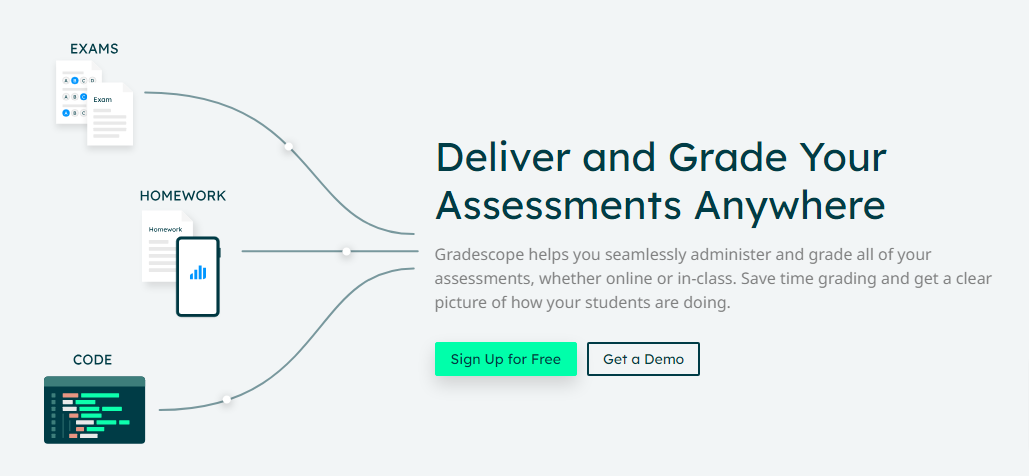
Gradescope is an AI-powered education management tool that assists teachers in grading assignments and examinations more rapidly. It can interpret mathematical equations, including fractions, as well as text.
Gradescope uses artificial intelligence (AI) to simplify teaching tasks and offer insightful data on student performance.
What are the best aspects of it? Let's investigate.
Top Features
- Assisted Answer Groups - Teachers can group similar student answers using Gradescope's Assisted Answer Groups function. Additionally, teachers have the authority to grant some students time extensions.
- AI-assisted grading - With the help of the AI-assisted grading tool, students can grade assignments, projects, and exams automatically. All these characteristics simplify the process and lessen the amount of administrative work for teachers.
Gradescope Pricing
There are two plans for Gradescope: Basic and Institutional. To get users started, there is also a free version of it.
8. Otter.AI - AI Meeting Note Taker & Real-time AI Transcription

There are limited solutions available that can manage the equally complicated fields of sales, marketing, and education. However, Otter.ai does meet a requirement in lectures and sales meetings—taking notes.
Otter is a great tool for instructors and students who wish to take notes and summarize lectures quickly. Transcribing audible remarks into written language in this manner facilitates the process of gathering and reviewing crucial information.
You may be confident that the AI will keep up with even the fastest speakers because it can perform all this at 160 words per minute. Furthermore, it's so easy to integrate with other programs and apps, such as Microsoft Teams, Zoom, and Google Meet.
Top Features
Otter's real-time transcription during meetings or classes is one of its strongest features. You may follow along, and review the notes later because the program automatically transcribes words as people speak.
This tool is also helpful if you have trouble taking notes or wish to record your classes precisely.
Otter.AI Pricing
Users of Otter.ai can choose from four different plans:
- Free (beginners)
- Pro: $16.99/month (suitable for smaller teams and those desiring additional minutes)
- Business: $40 per month (for big groups looking to share and cooperate)
- Enterprise: Customized pricing (tailored bundle to satisfy certain requirements)
9. Ivy.AI - Generative Chatbots for Higher Education, Healthcare & Government
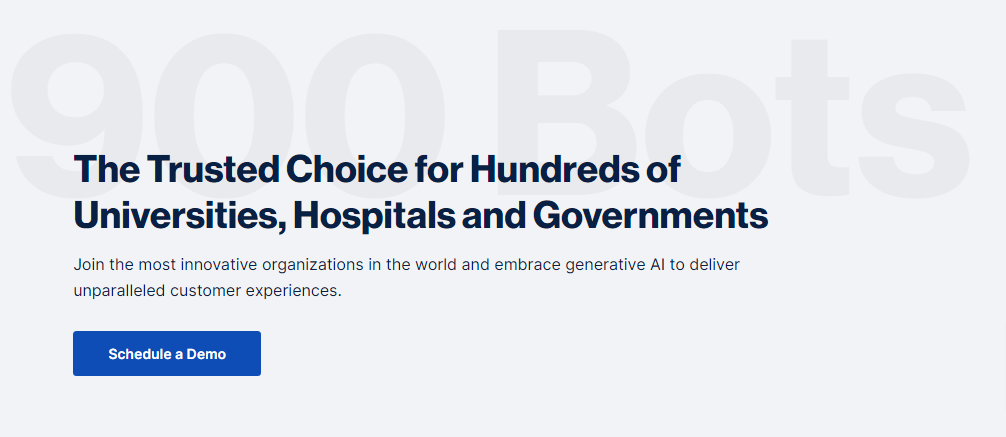
An AI suite called Ivy.ai offers conversational AI capabilities made especially for the various requirements of schools and universities. They can assist in streamlining certain parts of the standard university process, such as enrollment procedures, deadlines, and tuition.
Schools can organize and set up recruitment efforts with the aid of this tool. Ivy's main goal is to facilitate effective communication between colleges and their respective student. Additionally, its chatbots can offer details on departments and courses, student loans, tuition, housing, and extracurricular activities.
Top Features
- Seamless Integration With Over 30 Different Campus Vendors.
- Pre-Trained Knowledge Base for Accurate Answers
- Multi-Channel Communication for Engaging Interactions
- Critical Insights for Data-Driven Improvements
- Time and Cost Savings for Educational Institutions
Ivy.AI Pricing
Ivy.ai understands that each educational institution has unique needs. Instead of offering tiered plans, they provide a customized experience through a demo request. This ensures that their AI solutions are tailored to meet the specific requirements of your school or university.
10.Querium - Master Critical STEM Skills
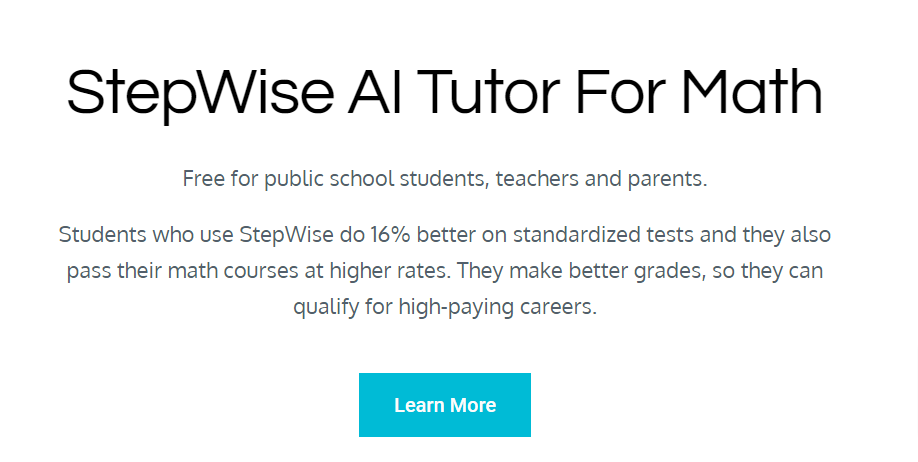
Artificial intelligence (AI) empowers students to excel in STEM (Science, Technology, Engineering, and Mathematics) fields. Querium, an innovative AI tool, is specifically designed to support students aspiring to pursue college-level STEM courses or embark on STEM career paths. With its advanced features and personalized learning approach, Querium is truly a game-changer for STEM education.
Top Features
- Personalized Lessons: Querium utilizes AI to deliver personalized lessons tailored to meet the unique needs of each student. By offering bite-sized portions, Querium ensures that complex STEM concepts are broken down into easily digestible segments, enhancing understanding and retention.
- Step-by-Step Assistance: The StepWise engine powers Querium, providing step-by-step tutoring assistance. This feature ensures that students receive guidance at every stage of their learning journey, promoting a deeper understanding of STEM topics.
- Student Engagement Enhancement: Querium's AI technology analyzes student learning habits and creates customized plans to increase engagement. By adapting to individual learning styles, Querium makes STEM subjects more accessible and captivating.
- Tutoring Insights: Querium doesn't just support students; it also assists tutors and educators. By analyzing answers and tracking lesson completion times, Querium provides insights into student learning habits, enabling tutors to identify areas for improvement and offer targeted support.
Querium Pricing
Querium is committed to making STEM education accessible to all. The platform is mostly free to use. It ensures that students from diverse backgrounds can benefit from its innovative features. While some specialized products may have a nominal access fee, Querium's core offerings remain widely available at no cost, making it a valuable resource for students worldwide.
11. Knowji - Audiovisual Vocabulary Apps For Students
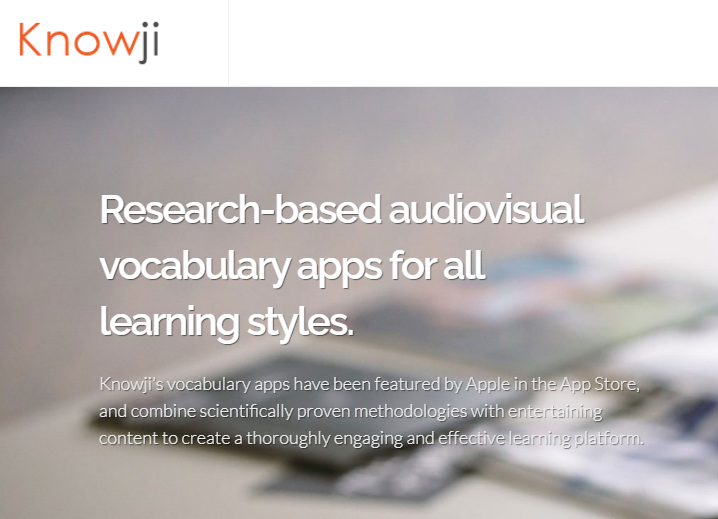
Students often struggle with retaining information when learning new vocabulary. Knowji understands this challenge and offers a fun and engaging solution. By combining audio and visual elements, such as cartoons, Knowji helps language learners accelerate their progress. The app utilizes a spacing repetition algorithm to track students' improvement on specific words and predict their likelihood of forgetting what they've learned.
Top Features
Knowji's standout features include:
- Multiple learning modes to facilitate familiarity with words
- A customizable and adaptable user interface catering to individual learning styles
- Engaging images and example sentences to foster interaction with new words
- Data-driven insights for progress tracking, blind spot identification, and targeted suggestions for improvement
- With Knowji, students can expect to enhance their vocabulary retention and language skills through an enjoyable and personalized learning experience.
KnowJi Pricing
The pricing of this innovative AI education tool is not mentioned on the official website.
12. Carnegie Learning - K-12 Education Solutions Provider
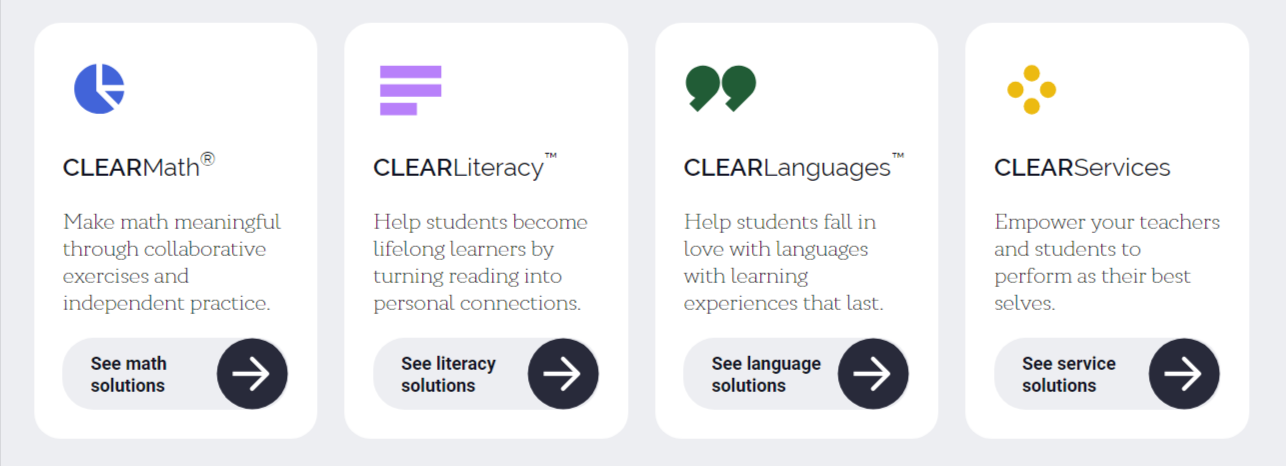
Carnegie Learning is an innovative education technology provider that leverages machine learning and AI to deliver personalized learning experiences to students in the K-12 system. Their software covers various educational areas, including math, world languages, and literacy, with a focus on engaging and effective learning.
One of their standout products is MATHia, a game-changing math software developed by researchers at Carnegie Mellon University. MATHia makes math fun and interactive through games and meaningful play, offering a unique and enjoyable learning experience.
Fast ForWord, another powerful tool in Carnegie Learning's arsenal, is designed to enhance students' cognitive skills in reading and language. By strengthening the underlying cognitive skills needed for reading and language, Fast ForWord helps students become more confident and capable learners.
Top Features
- Personalized Learning Plans - Carnegie Learning's software is distinguished by its ability to offer personalized learning plans tailored to each student's unique needs. The platform can even emulate human tutors, adding an emotional element to the learning process that increases engagement and motivation.
- Valuable Insights - Additionally, Carnegie Learning provides valuable insights and data to teachers, enabling them to effectively manage their students' progress and make informed instructional decisions. This data-driven approach ensures that educators can provide targeted support and interventions when needed.
Carnegie Learning is dedicated to making a positive impact on the educational journey of K-12 students with its cutting-edge technology and student-centered design. It fosters a love of learning and empowers them to reach their full potential.
Carnegie Learning Pricing
Similar to Knowji, The pricing information of Carnegie Learning is not mentioned anywhere.
13. Plaito - AI Tutor
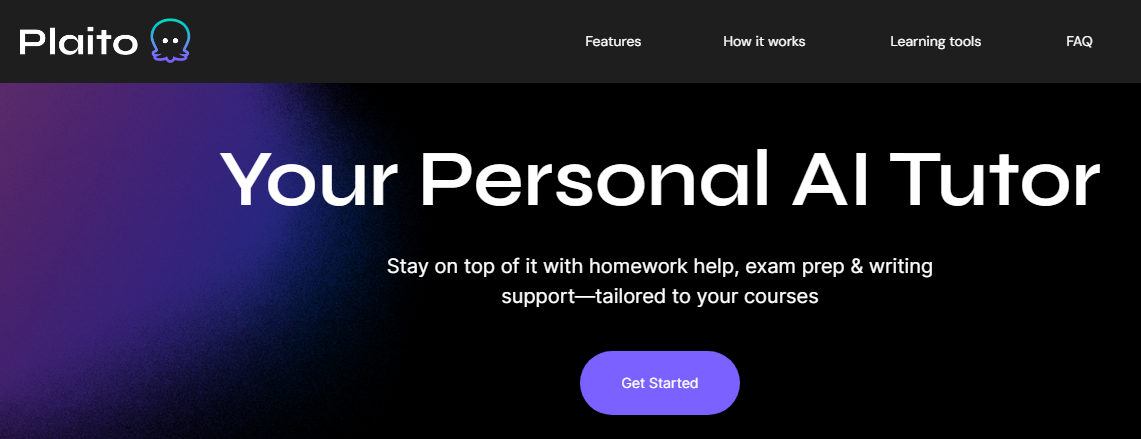
Last but not least, Plaito is an innovative ed-tech tool that revolutionizes the way students learn and develops essential skills. Plaito provides personalized writing, debating, and teamwork coaching - All by using artificial intelligence. It empowers students to excel in their academic pursuits.
Top Features
- One-On-One Tutoring Sessions - One of Plaito's standout features is its one-on-one tutoring sessions, where students receive tailored suggestions and prompts that focus on their needs. This targeted approach ensures that students gain clarity of concepts, build confidence, and deepen their understanding of lessons.
- Homework Help tool - The Homework Help tool is a game-changer, allowing students to upload pictures or screenshots of their homework problems and receive detailed lessons on how to solve them. Plaito's AI and language science-based tutoring adapt to each student's preferred pace, ensuring a truly personalized learning experience.
- Essay Writer And Summarizer - In addition to tutoring, Plaito offers a range of tools to enhance students' writing and language skills, including an essay writer and summarizer. The language learning features, presented in a gamified format, make learning a new language engaging and interactive. Students are motivated to complete challenges and earn rewards, fostering a sense of accomplishment.
- Outcome-Driven Assignments - Plaito's outcome-driven assignments are designed to improve memory retention and accelerate learning. The chatbot, available in four languages, adds a human-like conversational element to the platform, making it even more interactive and accessible.
Plaito Pricing
Plaito offers flexibility with a free plan and a paid subscription. The free plan operates on a coin system, where students can earn coins by completing tasks and challenges, which can then be used to access prompts within the app. For unrestricted access to all features, the paid plan is available at $14.99 per month or $199.99 annually, offering excellent value for dedicated users.
AI in Education: Embracing the Future with RedBlink Technologies
We can say that the future of education is here. And it's powered by AI! Artificial Intelligence has revolutionized the way we teach and learn, and the good thing is that it brings a positive change in education.
At RedBlink Technologies, we are at the forefront of this AI revolution in education. As a leading AI development company, we have been partnering with prestigious educational institutions like Amity University Punjab (AUP) to bring the power of AI to classrooms and transform the learning experience.
Are you a student? Click here to start your journey in AI and machine learning with Amity
Our advanced AI solutions are designed to cater to the diverse needs of students and educators. With our cutting-edge technology, we offer interactive and engaging learning environments, personalized tutoring, efficient grading systems, and so much more.
Join us on this exciting journey and discover the potential of AI in education. Together, let's empower the next generation with the skills and knowledge they need to thrive in a rapidly changing world.
Get in touch with RedBlink Technologies today and unlock the limitless possibilities of AI in education!
Feel free to contact us directly to schedule a free consultation. Let's create a brighter future, one AI innovation at a time.
RAG AI - A Breakthrough in Modern Artificial Intelligence
How Retrieval-Augmented Generation (RAG) Revolutionizing AI
Artificial intelligence (AI) is more than just a popular term these days; it's a quickly growing field full of new and exciting technologies that are changing the way we think about AI. One important new technology is called Retrieval-Augmented Generation (RAG).
RAG is set to make big changes in the world of AI. This article will explain RAG in simple terms, showing how it affects Large Language Models (LLMs) like ChatGPT & Google Bard.
We'll also look at the many ways RAG can be used in different industries, showing that it's not just a small update, but a major change in AI. By learning about what RAG can do, we can better understand where AI is headed and how it will impact our lives.
The Birth of RAG: Facebook's AI Marvel
Amidst this data deluge, Facebook/Meta has embarked on a journey to create more intelligent NLP models. The result? The Retrieval Augmented Generation (RAG) architecture is poised to redefine the landscape of AI-driven language understanding. This groundbreaking development is now an integral part of the open-source Hugging Face transformer library. At the core of RAG's innovation is its ability to enhance natural language processing.
What is RAG?
RAG, or Retrieval-Augmented Generation, is a model architecture in the field of natural language processing (NLP) that combines the strengths of two different approaches:
- Retrieval and
- Generation.
This model is designed to improve the quality and relevance of responses in language generation tasks, such as question-answering, chatbot responses, and content creation.
Here's a breakdown of the two components:
- Retrieval: In this step, the RAG model searches a large database of documents (like Wikipedia or a specialized corpus) to find relevant information based on the input query or prompt. This process is similar to looking up reference materials to gather knowledge about a topic.
- Generation: After retrieving relevant documents, the model uses a generative language model (like GPT-3 or a variant) to compose a coherent and contextually appropriate response. This step involves synthesizing information from the retrieved documents and any additional knowledge the model has learned during its training.
Did you know that retrieval-augmented generation (“RAG”) models combine the powers of pre-trained dense retrieval (DPR) and sequence-to-sequence models?
RAG models retrieve documents, pass them to a seq2seq model, and then marginalize them to generate outputs. The retriever and seq2seq modules are initialized from pre-trained models and fine-tuned jointly, allowing both retrieval and generation to adapt to downstream tasks.
Get in-depth details about RAG AI on Meta's blog post here-->
Reasons Behind the Origin of RAG AI
The Large Language Model (LLM) sometimes presents false or outdated information and relies on non-authoritative sources, leading to inaccuracies and reduced user trust. Retrieval-augmented generation (RAG) addresses these issues by directing the LLM to authoritative sources, ensuring more accurate and trustworthy responses.
RAG redirects the LLM to retrieve relevant information from authoritative, predetermined knowledge sources. Organizations have greater control over the generated text output, and users gain insights into how the LLM generates the response.
The key advantage of RAG is its ability to pull in up-to-date and specific information from external sources, enhancing the quality and accuracy of its responses. This is particularly useful in scenarios where keeping a language model's training data current is challenging, such as in rapidly evolving fields or for answering highly specific questions.
The Role of RAG in Enhancing LLMs
RAG enhances LLMs by providing up-to-date information, which ensures timely and relevant responses. Moreover, it reduces misinformation and hallucinations in LLM responses by anchoring them in factual data, which eventually increases the credibility of AI-generated information.
For instance, integration with vector databases like Milvus, a scalable open-source vector database, is essential for RAG's performance, allowing LLMs to access a verified knowledge base for context in answering questions. This is particularly useful in applications like question-answering systems.
RAG improves domain-specific responses from LLMs by enabling access to relevant databases. Expert-level precision in specialized fields is made possible for LLMs via RAG's use of domain-specific databases.
Additionally, the construction of an RAG involves critical decisions like data selection, embedding model, and index type. These choices significantly influence the retrieval quality. For example, the text-embedding-ada-002 model demonstrated superior performance in terms of groundedness and answer relevance compared to the MiniLM model, indicating that certain embedding models are more effective for specific types of information like Wikipedia data.
It also enables smarter AI interactions in applications by allowing developers to integrate. As a result, it enhanced user experience and efficiency in applications.
The Process Behind RAG AI
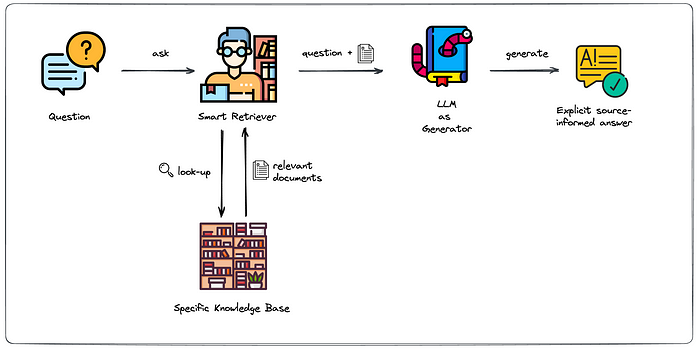
Source: https://www.ml6.eu/blogpost/leveraging-llms-on-your-domain-specific-knowledge-base
1. Advanced Strategies in Data Retrieval:
RAG models are at the cutting edge of databank construction, meticulously gathering data from a wide array of evolving sources. This approach ensures a database that is comprehensive and diverse, offering an all-encompassing perspective.
2. Proficient Interpretation of User Inquiries:
These models excel in unraveling the deeper aims behind user queries. Through an exhaustive dissection of query elements, they achieve an exact understanding, aligning perfectly with the users' specific needs.
3. Meticulous Data Retrieval Techniques:
Grasping the essence of user objectives, the system leverages cutting-edge algorithms for the precise selection of relevant data. This method prioritizes accuracy, ensuring the extraction of only the most relevant details.
4. Cognitive Enhancement for Increased Precision:
Surpassing standard data retrieval, these models constantly refine their comprehension by merging external, real-world insights. This strategic enhancement significantly heightens the precision and applicability of their responses.
5. Expert Formulation of Responses:
Utilizing a combination of internally sourced data and external insights, these models adeptly craft responses that are both contextually accurate and pertinent. This fusion results in outputs that are not only informative but precisely tailored to the users' specific inquiries.
Benefits of Retrieval-Augmented Generation
The Retrieval-Augmented Generation (RAG) AI offers a comprehensive range of benefits that significantly enhance both the efficiency and quality of information processing. Here is a complete list of the key advantages:
-
Enhanced Information Extraction:
- Precision and Relevance: RAG's retrieval models allow for accurate pinpointing of specific details within vast datasets, ensuring high precision and relevance in results.
- Comprehensive Understanding: It can understand and interpret complex queries, extracting nuanced information that traditional models might overlook.
-
Augmented Content Creation:
- Contextual Understanding: RAG grasps and deciphers context, generating coherent content that seamlessly aligns with the surrounding narrative.
- Creativity and Quality: It augments the creative process, producing high-quality content that resonates with the intended audience.
-
Tailored Adaptability:
- Customizable Models: Users can fine-tune Open AI RAG to their specific needs, ensuring optimal performance and relevance for individual business requirements.
- Flexibility: It adapts to various content styles and formats, making it versatile across different industries and content types.
-
Fresh and Contextual Information:
- Up-to-date Data: RAG can tap into information sources that are more current compared to the data used in training traditional Language Models (LLMs).
- Contextual Richness: The knowledge repository of RAG can house fresh and highly contextual data, providing relevant and accurate information.
-
Transparency and Reliability:
- Source Identification: It offers transparency regarding the data sources within its vector database, allowing for quick corrections and updates.
- Data Integrity: This level of transparency ensures high data integrity and reliability, as inaccuracies can be promptly addressed.
-
Improved Decision Making:
- Data-Driven Insights: RAG supports informed decision-making by providing comprehensive and accurate content.
- Analytical Depth: It delves deeper into topics, offering insights and analyses that aid in making well-informed decisions.
-
Scalability and Efficiency:
- Quick Content Generation: Open AI RAG significantly speeds up the content creation process, ideal for scaling up operations and meeting tight deadlines.
- Resource Optimization: It reduces the need for extensive human intervention, optimizing resource allocation and saving time.
-
Continuous Learning and Improvement:
- Adaptive Learning: RAG continually improves its output based on interactions and feedback, ensuring that the content remains relevant and up-to-date.
- Evolving with Trends: It adapts to changing trends and preferences, keeping the content fresh and engaging.
-
Enhanced User Interaction:
- Interactive Experience: RAG can provide more interactive and engaging user experiences, responding accurately to user queries and needs.
- Personalized Responses: It can tailor responses and content to the individual user, enhancing personalization and relevance.
Real-world Applications of RAG AI
- Conversational AI: RAG adapts to various conversational scenarios, offering accurate and contextually relevant responses, essential in sectors like healthcare, finance, and legal services.
- Healthcare: RAG AI in medicine or healthcare, is quickly becoming a major factor in healthcare, building generative AI solutions across all segments, from providers to public health agencies.
- Content Creation: RAG improves efficiency, accuracy, and adaptability in content creation. It simplifies the research process, as exemplified by financial analysts and students using several RAG-powered tools for quick, comprehensive responses.
- Customer Support: HubSpot research shows that 93% of customers remain loyal to companies providing excellent customer support. RAG enhances customer support by integrating real-time, enterprise-specific information, leading to improved accuracy, personalization, streamlined data access, and faster response times. It's notably effective in sectors like healthcare and technology, ensuring data relevance and timeliness.
- Fact-Checking: In the age of information, fact-checking and precision are of utmost importance. RAG serves as a guardian of truth, capable of verifying the accuracy of factual statements and claims. This ensures that the information presented to users not only remains reliable but also upholds a commitment to truth.
- Programming: For programmers and developers, RAG becomes an invaluable tool. It assists in generating code snippets, documentation, and examples tailored precisely to the context of the programming task at hand. This support streamlines the coding process, enhancing efficiency and reducing errors. Furthermore, several RAG AI-based no-code platforms make the creation of websites and apps a lot easier even for a layman.
- Scientific Research: In the domain of scientific research and discovery, RAG stands as a source of inspiration. It can swiftly and accurately analyze extensive volumes of scientific literature and data, uncovering hidden patterns, emerging trends, and even potential breakthroughs that might otherwise remain concealed.
- Legal Research and Analysis: RAG can assist legal professionals by quickly analyzing extensive legal documents and cases, and identifying precedents, relevant laws, and legal strategies.
- Language Translation and Localization: RAG can be employed to improve machine translation systems by providing contextually accurate translations and ensuring that the translated content is culturally sensitive and contextually relevant.
- Virtual Assistants and Personalized Recommendations: RAG-powered virtual assistants can provide personalized recommendations for products, services, entertainment, and more, based on an individual's preferences and behaviors.
- Marketing and Advertising: RAG AI in marketing can be used to create more targeted and engaging marketing content, optimize ad campaigns, and improve customer engagement strategies.
- Human Resources and Talent Acquisition: RAG can streamline the recruitment process by screening resumes, conducting initial candidate interviews, and providing insights into the suitability of candidates for specific roles.
- Travel and Tourism: RAG can offer personalized travel recommendations, suggest itineraries, and provide historical and cultural information about travel destinations.
- Data Analysis and Business Intelligence: RAG can assist in analyzing large datasets, identifying patterns, and generating actionable insights for businesses across various industries.
A Basic RAG Model
1. Initial Setup:
- Preparing the environment with necessary libraries.
- Gathering relevant datasets.
- Selecting a pre-trained language model.
- Setting up a retrieval database.
2. Model Training:
- Fine-tuning with specific datasets.
- Integrating retrieval mechanisms.
- Evaluating performance.
3. Advanced Configurations:
- Optimizing hyperparameters.
- Implementing cross-validation.
- Enhancing scalability.
- Incorporating multimodal capabilities.
Future of RAG AI
RAG AI, by integrating with the generative AI capabilities, offers a powerful synergy. This combination allows for more informed and context-rich AI responses, significantly enhancing user experiences. As we look to the future, we can expect RAG AI to become even more sophisticated, with its ability to pull from expansive and dynamic knowledge bases in real-time, offering answers and insights that are both accurate and highly relevant to the user's context.
In decision-making scenarios, RAG AI's impact is profound. It promises to streamline complex processes by offering data-driven insights and recommendations, reducing the time and effort needed to sift through large volumes of information. This capability is particularly vital in fields like healthcare, finance, and law, where precision and accuracy are paramount.
Furthermore, RAG AI is expected to be pivotal in shaping a more efficient and intelligent future. Its continuous learning and adaptation capabilities mean that the systems powered by RAG AI will become more robust and effective over time. This ongoing evolution will see AI becoming an even more integral part of our daily lives, from simplifying routine tasks to aiding in complex problem-solving scenarios.
In essence, the future of RAG AI is not just about advanced technology; it's about creating a more interconnected, intelligent, and accessible world. As this technology matures, we stand on the brink of a new era where AI is not just a tool, but a partner in our quest for knowledge and efficiency.
Get the Best of RAG AI with RedBlink Technologies' Experienced AI Developers
At RedBlink Technologies, as a generative AI development company our cadre of seasoned AI developers possesses the expertise needed to harness the capabilities of RAG for your Gen AI applications. We recognize that each organization comes with its unique data requisites, and we specialize in constructing tailor-made solutions that eradicate the risks associated with misinformation and outdated data.
Our Methodology:
- Collaborative Engagement: We engage closely with your organization to gain a comprehensive understanding of your specific needs and data sources.
- Customized Strategies: Our team of experts formulates bespoke prompts and retrieval processes, ensuring optimal accessibility to information.
- Continuous Enhancement: We maintain an ongoing process of refinement and updates to your GenAI application, ensuring it remains current and reliable.
In a landscape where the precision of AI-driven solutions is of utmost importance, partnering with us guarantees that you can leverage this groundbreaking technology to its fullest potential, ensuring that your Gen AI applications consistently stay at the forefront of innovation.
RAG represents not merely a buzzword but a new era in AI interaction. Reach out to us today to explore how AI can catalyze a revolution within your organization's initiatives.
Artificial Intelligence in Medicine & Public Healthcare 2024 Guide
AI in Medicine
Artificial Intelligence (AI) is revolutionizing the healthcare industry by introducing groundbreaking changes in various aspects of medical care. It's a transformative force that not only represents technological advancement but also a paradigm shift in healthcare methodologies. AI's integration into healthcare signifies a move towards more efficient, accurate, and personalized medicine. It is reshaping the landscape of diagnostics, treatment planning, and patient care, creating a new era of medical innovation.
The Fusion of Technology with Health Improvement Goals
The use of AI applications in medicine is a perfect example of how technology can be harnessed to enhance human health. This fusion is not just about employing advanced tools; it's a comprehensive approach that combines the power of AI algorithms, machine learning, and big data analytics with the intrinsic goal of improving patient outcomes. It's about leveraging technology to make healthcare more accessible, accurate, and personalized, thereby fulfilling the enduring quest to improve human health and well-being.
AI's Capabilities in Data Processing & Its Impact on Diagnostics & Treatment
One of AI's most significant strengths lies in its ability to process and analyze vast amounts of complex data rapidly and accurately. In diagnostics, AI algorithms, particularly in medical imaging, have demonstrated the capability to detect subtle irregularities that might be missed by the human eye. This leads to faster, more accurate diagnoses and the possibility of early disease detection, significantly improving patient outcomes. Moreover, AI is instrumental in developing personalized treatment plans. By analyzing a patient's genetic, lifestyle, and disease specifics, AI enables healthcare providers to move away from one-size-fits-all treatments to more effective, individualized care plans. This not only enhances the efficacy of treatments but also minimizes the risk of adverse reactions, leading to better overall healthcare experiences.
This clearly indicates how essential it is to seek the expertise of AI professionals to develop cutting-edge applications and software solutions, harnessing the transformative power of AI for the future.
Explore the cutting-edge applications of AI in Medicine with RedBlink's expert AI Consulting Services. Unlock transformative solutions for healthcare innovation and efficiency.
Key Takeaways
- Revolutionizing Healthcare: AI is transforming the healthcare industry by enhancing efficiency, accuracy, and personalization in medical care.
- Overcoming Traditional Challenges: AI addresses inefficiencies, data management issues, errors in medical documentation, security concerns, and regulatory and research costs in healthcare.
- Enhancing Medicine Manufacturing: AI plays a critical role in every stage of medicine manufacturing, from research and development to clinical trials and market surveillance.
- Key Applications: AI's applications include diagnostic imaging, drug discovery, Electronic Health Records management, personalized medicine, virtual health assistants, telemedicine, and more.
- Diverse Technologies: The blog discusses Machine Learning, Natural language processing, Computer Vision, and Predictive Analytics as key AI technologies in medicine.
- Implementation Guidelines: Successful AI implementation involves defining objectives, forming cross-functional teams, developing data governance policies, and selecting appropriate AI technologies.
- Future of AI in Medicine: AI's future in healthcare is promising, focusing on improving patient-doctor interactions, personalizing medicine, and expanding preventive healthcare, while also considering ethical implications.
Challenges in the Medical Sector Addressed by AI
1. Inefficiencies in Traditional Medical Practices
AI significantly addresses inefficiencies prevalent in conventional medical practices. Manual processes, excessive paperwork, and time-consuming procedures are streamlined using AI-driven solutions. These solutions automate routine tasks, reduce the time for diagnostics and treatment, and enhance the overall productivity and efficiency of healthcare services.
2. Data Management and Interoperability Issues
AI technologies play a crucial role in overcoming data management challenges. They break down data silos and facilitate the seamless sharing of patient data among various healthcare systems. AI aids in standardizing and interpreting diverse data formats, improving interoperability across different healthcare platforms.
3. Error Reduction and Improved Patient Data Access
By automating data entry and processing, AI reduces human errors in medical documentation. This increases the accuracy of patient records, enhancing patient safety and care quality. AI-driven systems also improve access to comprehensive patient data, supporting healthcare professionals in making more informed decisions.
4. Enhancing Security and Privacy in Healthcare
AI contributes to strengthening the security and privacy of medical data. It employs advanced algorithms for data encryption and secure storage, ensuring the protection of sensitive patient information. AI also helps in monitoring and detecting potential security threats, safeguarding against data breaches.
5. Navigating Regulatory Environments and Research Costs
AI assists in navigating complex regulatory environments in the healthcare sector. It streamlines the process of compliance with various health regulations and standards. Moreover, AI reduces the costs associated with medical research and drug development by optimizing resource allocation and enhancing the efficiency of research processes.
Resources:
- McKinsey & Company's "Unlocking the Potential of AI in Healthcare" report:
- This report delves into the inefficiencies in healthcare and how AI can address issues like data management, access, and resource allocation.
- Journal of the American Medical Informatics Association's "Improving Data Interoperability in Healthcare" article:
- This article provides a detailed analysis of data interoperability challenges and how AI can be leveraged for better data exchange.
- National Institute of Standards and Technology's (NIST) "Healthcare Cybersecurity Framework" website:
- This resource offers guidance on strengthening healthcare cybersecurity, which is critical for AI implementation.
AI's Role Across the Medicine Manufacturing Lifecycle
AI's Contribution to Each Stage of Medicine Manufacturing
- Research and Development (R&D): AI accelerates the R&D phase by analyzing vast biological and chemical data, and identifying potential drug candidates more efficiently.
- Preclinical Testing: AI models predict the efficacy and safety of compounds, streamlining the selection process for clinical trials.
- Clinical Trials: AI optimizes trial design, selects suitable candidates, and predicts outcomes, enhancing trial efficiency and effectiveness.
- Manufacturing: AI streamlines the production process, ensuring quality control, and reducing waste and costs.
- Supply Chain Management: AI forecasts demand, manages inventory, and optimizes distribution channels.
Key Applications of AI in Medicine
- Diagnostic Imaging and CNN Algorithms - AI, particularly Convolutional Neural Networks (CNNs), enhances the accuracy of diagnostic imaging, aiding in the detection of diseases through X-rays, MRIs, and CT scans.
- Acceleration of Drug Discovery and Development - AI expedites the drug discovery process by analyzing vast datasets to identify potential drug candidates and optimize drug formulations.
- Transformation of EHR Management via NLP - Natural Language Processing (NLP) revolutionizes the management of Electronic Health Records, making data extraction and interpretation more efficient.
- Personalized Medicine with Data-Driven Plans - AI analyzes genetic, lifestyle, and environmental data to develop personalized treatment plans, improving efficacy and reducing side effects.
- Role of Virtual Health Assistants and Predictive Analytics - AI-powered virtual health assistants provide patient support and healthcare information. Predictive analytics in AI forecasts health outcomes and personalizes patient care plans.
- Enhancements in Remote Patient Monitoring and Telemedicine - AI, combined with IoT devices, facilitates remote monitoring of patient health, enhancing telemedicine services for more accessible healthcare.
AI's Impact on Epidemiology, Clinical Trials, Mental Health, and Fraud Detection
AI aids in disease outbreak prediction and management, optimizes clinical trial designs, assists in mental health diagnosis and therapy, and detects fraudulent activities in healthcare billing.
These applications showcase AI's diverse and transformative role in improving diagnostics, treatments, patient care, and overall healthcare efficiency.
Resources:
- Nature Medicine's "AI for Clinical Trials" article:
- This article analyzes how AI can accelerate and streamline clinical trials, making drug development faster and more efficient.
- Journal of Medical Internet Research's "Natural Language Processing for Electronic Health Records" review:
- This review examines the potential of NLP in managing EHRs, improving data extraction, and facilitating personalized medicine.
Diverse AI Technologies in Medicine
- Machine Learning in Diagnostics and Risk Assessment - Machine Learning algorithms analyze medical data to identify patterns and correlations, aiding in accurate diagnostics and risk assessment for various diseases.
- Natural Language Processing (NLP) for Clinical Text Analysis - NLP interprets clinical texts, extracting meaningful information from patient records, and enhances understanding of patient experiences and narratives.
- Computer Vision in Medical Imaging and Diagnostics - Computer Vision, particularly through Convolutional Neural Networks, revolutionizes medical imaging by providing detailed and accurate analysis of diagnostic images like X-rays and MRIs.
- Predictive Analytics for Patient Data Analysis and Outcome Anticipation - Predictive Analytics uses statistical models and machine learning algorithms to analyze patient data, forecasting future health outcomes and assisting in proactive healthcare decision-making.
With our Generative AI development services, you will get versatile solutions, including AI-driven fraud detection and pharmaceutical pricing optimization, saving time and costs for healthcare providers and pharmaceutical companies.
Guidelines for Successful AI Implementation in Medicine
- Defining Objectives and Conducting Needs Assessments - Clearly identify the goals for AI implementation in healthcare settings. Conduct comprehensive needs assessments to understand the specific areas where AI can add value.
- Building Cross-Functional Teams and Developing Data Governance Policies - Form multidisciplinary teams comprising healthcare professionals, IT experts, and data scientists. Develop robust data governance policies to ensure data quality, privacy, and security.
- Assessing Data Readiness and Selecting Appropriate AI Technologies - Evaluate the existing healthcare data for quality and readiness. Choose AI technologies that align with the healthcare objectives and data infrastructure.
- Building or Acquiring AI Models Tailored to Medical Requirements - Decide whether to build custom AI models or acquire pre-trained ones. Ensure that these models are tailored to meet the specific medical requirements and challenges of the healthcare setting.
AI in medicine is poised to transform healthcare, offering unprecedented advances in diagnosis, treatment, and patient care. Generative AI integration services signifies a major leap towards more efficient, personalized, and accessible healthcare. However, this journey is accompanied by crucial ethical considerations, including data privacy, algorithmic transparency, and equitable access to AI-driven care.
Future trends in AI will likely focus on enhancing patient-doctor interactions, further personalizing medicine, and expanding AI's role in preventive healthcare. The ongoing evolution of AI in medicine promises not only technological innovation but also a fundamental shift in the healthcare paradigm.
FAQs
Q1 How is AI being used in medicine?
Ans - AI is used in medicine for various tasks including diagnosing diseases, personalizing treatment plans, analyzing medical images, predicting patient outcomes, and automating administrative tasks.
Q2 Will AI replace physicians?
Ans - AI is unlikely to replace physicians. Instead, it's expected to augment medical professionals, allowing them to make more informed decisions and spend more time on patient care.
Q3 What is the future of AI in the medical field?
Ans - The future of AI in medicine includes more advanced diagnostic tools, personalized medicine, improved patient care, and operational efficiencies. It's also expected to play a significant role in research and drug discovery.
Q4 How is AI disrupting healthcare?
Ans - AI disrupts healthcare by improving diagnostic accuracy, predicting patient outcomes, optimizing treatment plans, reducing operational costs, and enhancing patient engagement through personalized medicine.
RedBlink Addressing Specific Challenges in Drug Discovery, Clinical Trials, Regulatory Approval, & More
- Drug Discovery: AI identifies novel drug candidates and therapeutic targets, significantly cutting down the time and cost of discovery.
- Clinical Trials: AI's predictive analytics improve patient selection, monitor trial progress, and predict trial outcomes, reducing the time to market.
- Regulatory Approval: AI aids in navigating complex regulatory landscapes, ensuring compliance and facilitating quicker approvals.
- Market Surveillance: Post-market, AI monitors drug performance and adverse reactions, ensuring continued safety and efficacy.
AI's integration into the medicine manufacturing lifecycle marks a significant advancement, addressing key challenges and streamlining processes from drug discovery to market delivery.
At RedBlink Technologies, our AI experts enhance medical processes by tailoring custom LLM-based applications to client data. Harnessing the power of cutting-edge language models like GPT-4, Vicuna, Llama 2, and GPT-NeoX, it crafts context-aware applications. These applications are pivotal in refining decision-making processes, deepening analytical insights, and escalating productivity levels, all while upholding the highest standards of data privacy. Such a robust framework is undeniably vital for the advancement of modern medical operations. Our professionals optimize medical workflows, processing diverse data types, and utilizing advanced language models for context-aware applications, ensuring data privacy.
As a result, the crafted solutions simplify complex medical workflows, resolve interoperability issues, and adapt to rapid advancements. Our user-friendly features enable coding-free creation of intelligent applications, seamlessly integrating language models and templates. This technological innovation leads to significantly improved operational efficiency and a substantial reduction in error rates, thus enhancing the overall quality of medical processes. Moreover, RedBlink's technology plays a crucial role in aiding businesses with pharmaceutical pricing and promotion strategies. Delving into the comprehensive flow process of RedBlink’s Large Language Model (LLM) applications, one can gain insights into how they empower pharmaceutical companies. These applications provide unparalleled operational flexibility, swift adaptability to market changes, and increased productivity. This, in turn, revolutionizes strategic approaches to pharmaceutical sales, setting a new standard in the industry. Ready to dive more into generative AI? Learn how to build your own generative AI solutions.
If you're looking to elevate your medical processes or pharmaceutical strategies with the latest in AI technology, don't hesitate to reach out to us. At RedBlink, we're dedicated to empowering businesses with innovative solutions tailored to their unique needs. Contact us today to learn more about how RedBlinks's Machine learning engineers can transform your approach to medicine and pharmaceuticals.
App Store Algorithm Updates - Strategies for Success in 2024
The App Store, a pivotal platform in the digital landscape, serves as a critical gateway for millions of smartphone users to access a vast array of applications. Launched by Apple Inc., it revolutionized how we discover, download, and interact with mobile apps. With its extensive catalog covering diverse categories from entertainment to productivity, the App Store has become an indispensable tool in our daily digital lives.
Understanding the App Store's algorithm— the complex mechanism that dictates how apps are discovered and ranked—is crucial for app developers and marketers. This algorithm, a blend of machine learning and predefined rules, determines an app's visibility to users. Changes in this algorithm can significantly impact the success of an app, influencing factors such as user discoverability, download rates, and overall revenue generation.
Staying abreast of these algorithm updates is not just a technical necessity but a strategic imperative. For developers, it means the difference between obscurity and visibility. For businesses, it's about staying competitive in a rapidly evolving market. For users, it ensures a more relevant and quality-driven app discovery experience. As the digital world continues to evolve, keeping up with these changes is essential for anyone invested in the mobile app ecosystem.
In essence, the App Store is more than just a marketplace; it's a dynamic environment where visibility and success are governed by an ever-changing set of rules. This article aims to demystify these changes, offering insights into the latest updates and strategies to navigate this digital terrain effectively.
Evolution of the App Store's Algorithm: Key Milestones
The App Store's algorithm has undergone significant transformations since its inception, each change marking a key milestone in its evolution. Initially, the algorithm was relatively straightforward, primarily focusing on download numbers and velocity. However, as the market matured and competition intensified, Apple recognized the need for a more sophisticated approach to ensure a fair and relevant user experience.
One of the major shifts occurred when the algorithm started incorporating user ratings and reviews, acknowledging that quality and user satisfaction were as crucial as the number of downloads. This change emphasized the importance of user feedback in determining an app's ranking, encouraging developers to focus on quality and user experience.
Another pivotal update was the introduction of machine learning elements, enabling the algorithm to learn from user behaviors and preferences. This advancement allowed for more personalized and relevant app recommendations, enhancing the overall user experience.
The integration of usage frequency and engagement metrics marked another significant evolution. This shift meant that apps not only had to attract users but also engage them consistently to maintain high visibility in the App Store.
Impact of Past Updates on App Developers and Users
Each update to the App Store's algorithm has had a profound impact on both app developers and users. For developers, these changes often required a shift in focus and strategy. The increased emphasis on user satisfaction and engagement led to an industry-wide prioritization of user experience and app quality over mere marketing tactics. Developers who adapted quickly to these changes often saw improved rankings and increased visibility.
For users, these updates have generally enhanced the App Store experience. The refined algorithm has become better at presenting users with high-quality, relevant apps, tailored to their preferences and usage patterns. This has not only made app discovery more efficient but has also fostered a more trustworthy and satisfying interaction with the App Store.
Understanding these historical changes is crucial for comprehending the current state of the App Store algorithm and anticipating its future direction. This perspective provides valuable insights into how and why the App Store operates the way it does today, offering a foundation for navigating its ongoing evolution.
Latest Algorithm Updates
Understanding the nuances of these recent updates is vital for anyone involved in the app development and marketing space. It enables developers to align their strategies with the current algorithmic trends, ensuring better visibility and success in the competitive App Store environment. For users, these insights provide a clearer understanding of how the apps they see and use are selected and ranked.
Detailed Analysis of the Most Recent App Store Algorithm Changes
The App Store's algorithm is continually evolving, with the latest updates reflecting Apple's commitment to enhancing user experience and ensuring fair competition among developers. One of the most notable recent changes is the increased emphasis on user engagement metrics. This shift means that apps which not only attract users but also keep them engaged with regular use, updates, and high user retention rates are more likely to be favored in search rankings.
Another significant update involves the algorithm's improved capability to detect and penalize manipulative practices such as fake reviews and artificially inflated download numbers. This development aims to level the playing field and ensure that app rankings more accurately reflect genuine user interest and quality.
The algorithm has also become more sophisticated in understanding and categorizing app content, ensuring that search results are more relevant to the specific queries of users. This change benefits users by providing them with more accurate and tailored app recommendations.
Insights into How These Updates Affect App Visibility and User Experience
For app developers, these updates necessitate a strategic pivot. Emphasizing engagement and quality means developers need to focus more on creating a compelling, user-friendly app experience. This involves regular updates, addressing user feedback, and implementing features that encourage regular usage.
From the perspective of app visibility, these updates mean that traditional approaches focusing purely on keywords and download strategies may no longer be as effective. Instead, developers need to adopt a more holistic approach that encompasses not only app optimization but also the creation of a valuable and engaging user experience.
For users, the recent updates to the App Store algorithm translate into a more satisfying and relevant browsing experience. They are more likely to encounter high-quality apps tailored to their interests and needs, reducing the time and effort needed to find suitable applications. This user-centric approach also means that users have a more significant influence on app rankings through their ratings, reviews, and engagement, leading to a marketplace that better reflects user preferences and behaviors.
Key Factors Influencing the Algorithm
Understanding these key factors is crucial for developers aiming to optimize their apps for better visibility in the App Store. It's not just about creating a great app but also about ensuring that it meets the criteria that the algorithm values. For users, being aware of these factors can provide insights into why certain apps are recommended or ranked higher in their search results.
App Quality: Performance, User Feedback, and Crash Rates
The App Store's algorithm places significant emphasis on the overall quality of an app. This assessment includes several factors:
- Performance: Apps that load quickly, run smoothly, and provide a seamless user experience tend to rank higher. Performance is a critical factor as it directly impacts user satisfaction.
- User Feedback: Ratings and reviews from users play a vital role. Positive feedback and high ratings are indicative of a good quality app and influence its visibility in the App Store.
- Crash Rates: Apps that are stable and have lower crash rates are favored. High crash rates not only lead to negative user experiences but also lower rankings in the App Store.
User Engagement: Time Spent, Frequency of Use, and In-app Activities
User engagement is another key determinant in the App Store's algorithm. This includes:
- Time Spent: The amount of time users spend within an app is a strong indicator of its value and engagement level.
- Frequency of Use: How often users open and interact with an app. Regular use suggests that the app is useful or enjoyable, contributing to higher rankings.
- In-app Activities: Actions users take within the app, like completing levels in a game, making purchases, or creating content, indicate engagement and satisfaction.
App Metadata: Titles, Descriptions, Keywords, and Categories
The way an app is presented in the App Store also influences its ranking:
- Titles: Clear and concise titles that include relevant keywords can help in better indexing and discovery.
- Descriptions: Detailed and accurate descriptions of the app's functionality and features aid in matching user queries with relevant apps.
- Keywords: Proper use of keywords in the app's metadata helps in improving its visibility for relevant searches.
- Categories: Correct categorization ensures that the app is found by the right audience, contributing to better user targeting and app relevancy.
Optimization Strategies for Developers
By employing these optimization strategies, developers can significantly enhance their app's visibility and appeal in the App Store. This not only helps in standing out among millions of apps but also ensures that the app reaches its intended audience effectively, leading to better engagement and success.
Importance of Optimizing App Listings for Visibility and Relevancy
In the competitive landscape of the App Store, ensuring that an app stands out is crucial. Optimizing app listings for visibility means making the app more discoverable to the target audience. Relevancy, on the other hand, ensures that the app reaches users who are most likely to find it useful and engage with it. Effective optimization strategies can lead to higher rankings, increased downloads, and, ultimately, greater success in the App Store.
Techniques for Improving App Quality and User Engagement
- Regular Updates: Keep the app up-to-date with regular updates that improve functionality, add new features, or fix bugs. This not only enhances the app's quality but also signals to the App Store that the app is actively maintained.
- Focus on User Experience: Design the app with the user in mind. Ensure a user-friendly interface, intuitive navigation, and a satisfying overall experience.
- Encourage User Feedback: Actively seek user reviews and ratings. Constructive feedback can guide improvements, while positive ratings can boost the app's appeal to new users.
- Engage Users with In-app Activities: Create features that encourage users to interact more within the app. This can include gamification elements, personalized content, or interactive functionalities.
Best Practices for Metadata Optimization
- Effective Use of Keywords: Research and integrate relevant keywords into the app's title, description, and metadata fields. This helps the app appear in relevant searches.
- Compelling Descriptions and Titles: Write clear, concise titles and detailed descriptions that accurately reflect the app’s features and benefits. Avoid misleading information that can lead to negative user experiences.
- Appropriate Categorization: Choose the most relevant category for the app. Proper categorization aids users in finding the app during category-specific searches.
- High-Quality Visuals: Use high-quality screenshots and videos that showcase the app's main features and user interface. Visuals can greatly influence a user's decision to download the app.
Predictions for Future Updates
By anticipating and preparing for these potential future changes, developers can position their apps not only to survive but thrive in the dynamic environment of the App Store. Staying informed, prioritizing user-centric features, and embracing emerging technologies are key to maintaining relevance and success in the app market.
Expert Opinions on Potential Future Changes in the App Store Algorithm
In an ever-evolving digital landscape, anticipating future changes in the App Store algorithm is crucial for developers to stay ahead. Experts in the field often speculate on potential directions Apple might take:
- Increased Personalization: There's a growing belief that the App Store may lean towards more personalized app recommendations, using advanced machine learning algorithms to cater to individual user preferences and behaviors.
- Enhanced Security and Privacy Measures: With increasing concerns around data privacy, future updates might include stricter guidelines and checks for app security and data handling practices.
- Greater Emphasis on User Experience Metrics: Metrics such as session length and user engagement might receive more weight in determining app rankings, pushing developers to focus even more on creating valuable user experiences.
- Integration of Augmented Reality (AR) and AI Elements: As AR and AI technologies mature, they could become significant factors in app rankings, especially for apps that effectively leverage these technologies.
Strategies for Staying Ahead in the Evolving App Market
To adapt to and benefit from these potential changes, developers can employ several strategies:
- Stay Informed and Adaptable: Regularly follow updates from Apple and tech industry trends. Being quick to adapt to changes can give developers a competitive edge.
- Prioritize User Privacy and Security: Implement robust security measures and respect user privacy. This not only aligns with potential algorithm changes but also builds user trust.
- Invest in User Experience and Engagement: Continuously enhance the app’s user experience. Consider incorporating interactive and emerging technologies like AR, if relevant.
- Embrace AI and Machine Learning: For apps that can benefit from AI and machine learning, integrating these technologies might boost their relevance and appeal in future algorithm updates.
Real-World Case Studies
These real-world examples illustrate the effectiveness of aligning app development and marketing strategies with the App Store's evolving algorithm. By focusing on user engagement, quality, feedback, and personalization, these apps achieved improved visibility and success, offering valuable lessons for other developers in the app market.
Examples of Apps That Successfully Adapted to Algorithm Changes
Examining real-world examples provides valuable insights into how successful apps have navigated and adapted to App Store algorithm changes. These case studies highlight practical strategies and outcomes, offering a roadmap for other developers.
- A Social Media App Enhancing User Engagement: A prominent social media app responded to the algorithm's emphasis on user engagement by introducing new interactive features, such as live streaming and community challenges. This led to increased user session times and more frequent app interactions.
- A Productivity App Focusing on Quality and User Feedback: A popular productivity tool used customer feedback to guide its updates and improvements. By addressing user-reported issues and incorporating suggested features, the app saw a significant increase in positive ratings, leading to higher rankings in the App Store.
- A Fitness App Leveraging Personalization: In response to the algorithm's focus on personalized experiences, a fitness app incorporated machine learning to offer customized workout plans. This resulted in enhanced user satisfaction and engagement, positively impacting its visibility in the App Store.
Analysis of Their Strategies and Outcomes
- Emphasis on User Engagement: Apps that introduced features to increase user interaction and time spent within the app aligned well with the algorithm's focus on engagement metrics. This strategy led to improved app visibility and user retention.
- Commitment to Quality and User Feedback: Apps that actively sought and implemented user feedback demonstrated a commitment to quality, which is highly valued by the App Store algorithm. This approach not only improved app performance but also enhanced user satisfaction, reflected in higher ratings and reviews.
- Innovation and Personalization: Apps that embraced emerging technologies like AI for personalization provided users with a unique and tailored experience. This innovation aligned with the algorithm’s preference for apps offering personalized and engaging content, leading to better rankings.
Conclusion
Understanding the intricacies of App Store algorithm updates is not just a technical endeavor but a strategic imperative for app developers and marketers. These updates significantly influence how apps are discovered, ranked, and ultimately, how successful they become in a highly competitive digital marketplace. This article has provided a comprehensive overview of the evolution of the App Store's algorithm, the latest updates and their impacts, key factors influencing the algorithm, effective optimization strategies, predictions for future changes, and valuable real-world case studies.
For developers, the key takeaway is the importance of staying informed and adaptable. The digital landscape is dynamic, and success in the App Store requires a willingness to evolve with changing algorithms. Emphasizing app quality, user engagement, and strategic metadata optimization are crucial. Additionally, looking ahead and preparing for future trends, such as increased personalization and the integration of emerging technologies, can position apps favorably for upcoming algorithm shifts.
Innovation and continuous adaptation are the cornerstones of thriving in the App Store's ecosystem. Developers and businesses must not only understand these changes but also proactively implement strategies that align with them. By doing so, they can enhance their app’s visibility, user experience, and overall success in the App Store.
RedBlink's SEO for SaaS Services
In navigating these challenges, partnering with experts who understand the nuances of SEO and digital marketing can be invaluable. RedBlink offers specialized SEO services for SaaS (Software as a Service) platforms, helping businesses optimize their online presence and visibility. With a deep understanding of SEO dynamics and a track record of success, RedBlink's team can assist in crafting strategies that align with the latest trends and algorithm updates. By leveraging RedBlink's expertise, SaaS businesses can ensure that their digital marketing efforts are not only effective but also future-proofed against the ever-evolving digital landscape.
Learn more about how RedBlink can enhance your SaaS platform's SEO strategy at RedBlink SEO for SaaS.
Google Gemini vs OpenAI ChatGPT : Next-Gen AI Showdown 2024
We're in an exciting time for language technology, with big names like Google and OpenAI all competing to develop the best AI language models. These companies are at the forefront, each bringing its unique strengths to the table.
OpenAI’s ChatGPT has already created a buzz and is being used by millions of users. In the meantime, Google, better known for its search engine and AI expertise, released Google Bard after ChatGPT, but it was not well received. But now, Google is working on a language model, Gemini, which is not only powerful but also overtakes the ChatGPT 4.0 version.
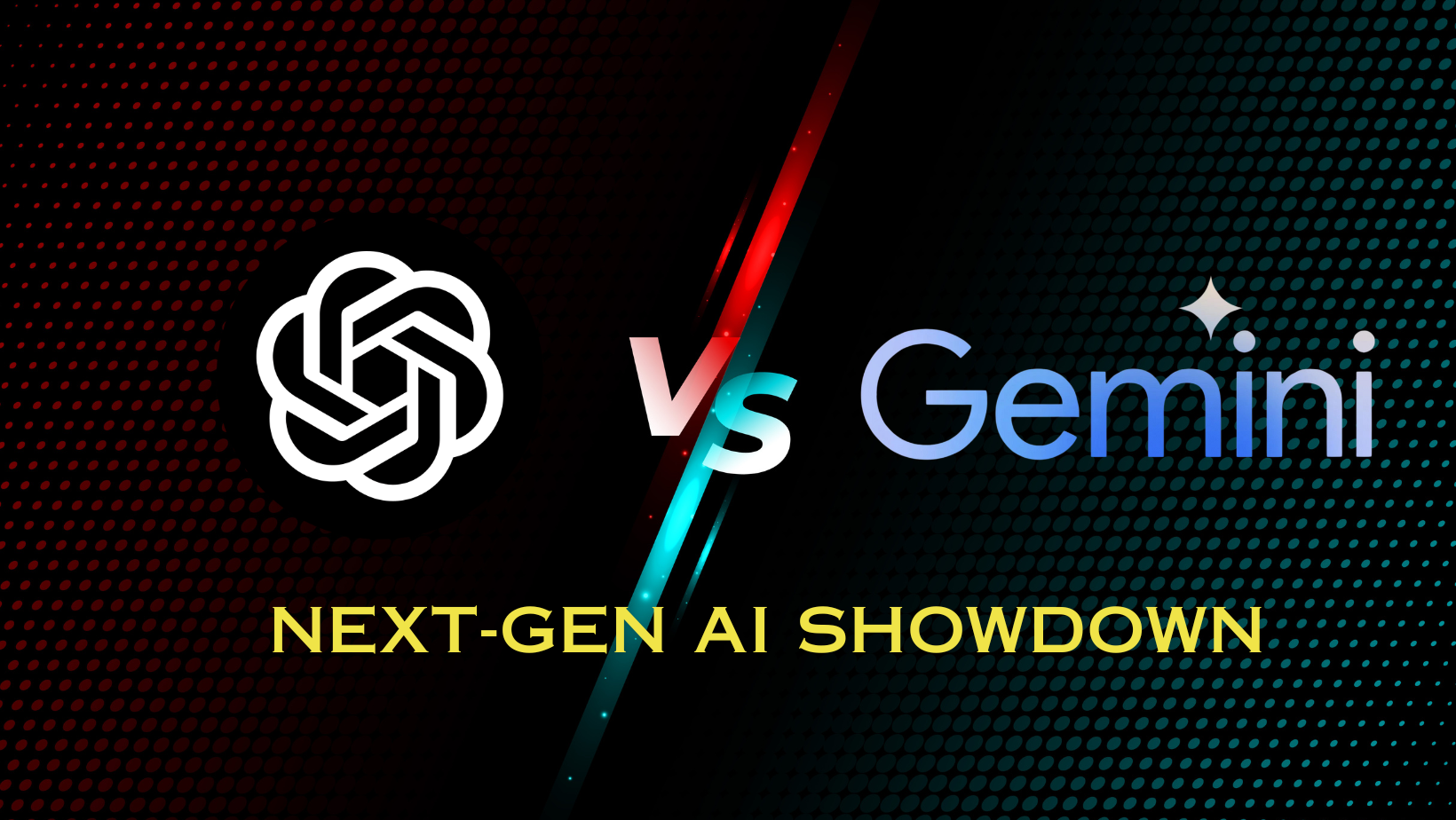
This large language model (LLM), also aims to overcome the flaws that their previous versions have. Meanwhile, OpenAI has made a name for itself with the GPT series, especially ChatGPT. This model has changed the game in conversational AI, known for its advanced features and flexibility.
This intense competition among these tech giants means they're pouring in resources, talent, and new ideas. We're seeing rapid advancements in language models, moving us closer to more advanced, human-like AI capabilities.
In the latest developments of AI, Google and OpenAI are leading the pack with their advanced models: Google’s Gemini and OpenAI’s ChatGPT-4. These models are some of the most powerful AI tools out there.
This blog will dive into their key features and discuss how Google and OpenAI price these tools. We will also compare these models head-to-head, including their language models, performance, etc. So, let’s get started!
What is Google Gemini?
Google has introduced a new AI called Gemini, and it's making waves in the tech world. Gemini is an advanced AI created by Google.
What's special about it is that it can understand not just text, but also images, videos, and even audio. It's super versatile and can handle complex tasks in areas like math, physics, and even different programming languages.
You can now find Gemini working with Google Bard and in the Google Pixel 8 phone. In the future, Google is planning to bring Gemini into more of its services.
Here's a quick rundown of what Gemini can do:
- It's a "multimodal" AI, which means it can handle text, images, audio, and video all at once. This makes it useful for a whole bunch of different things.
- Gemini comes in three versions: Ultra, Pro, and Nano. Each one is designed for different needs and levels of performance.
- Google's bigwigs say Gemini is even better than OpenAI's GPT-3.5. That's a big deal because it shows just how capable Gemini is.
- Google is also planning to let businesses use Gemini through Google Cloud. This means companies can add Gemini's smarts to their apps.
What is OpenAI ChatGPT?
OpenAI's ChatGPT-4 stands out as a competent language model, renowned for its sophisticated handling of language tasks. Here's a quick rundown of what makes ChatGPT-4 special:
- Language Mastery: ChatGPT-4 is a pro at both creating and understanding text. This makes it incredibly versatile, and able to tackle a broad spectrum of language-based tasks.
- Real-World Uses: You'll find ChatGPT-4 being used in all sorts of everyday applications. From powering virtual assistants to supporting educational tools, aiding in finding information, and even streamlining tasks, it's got a wide array of practical uses.
- Extra Strength: What sets ChatGPT-4 apart is its strength. It's more advanced than many other models out there, having been thoroughly tested and compared to its peers in the field.
Comparison of Google Gemini vs ChatGPT - Differences To Be Aware Of
The main difference between Open AI ChatGPT and Google's Gemini is that ChatGPT focuses on text generation and conversation, excelling in creative writing, translation, and engaging in open-ended, informative dialogue, whereas Gemini emphasizes multimodality, meaning it can seamlessly handle and generate text, images, audio, and video.
Google's new AI, Gemini, seems to be stepping up the game against ChatGPT. It has outperformed ChatGPT in almost all academic tests, like understanding text, images, videos, and even speech.
Specifically, when tested on a wide range of topics like maths, physics, and law, Gemini scored 90%, which is higher than ChatGPT's 86.4%, which is quite impressive. This includes doing better in text and reasoning, image understanding, video understanding, and speech benchmarks.
But comparing them isn't straightforward because they were tested differently. Gemini used a method called 'Chain of Thoughts,' while ChatGPT used the '5-shots' technique. This difference in testing methods could have affected their scores.
The less powerful Pro model of Gemini AI still performed better than GPT-3.5 in most tests. Let's dive into the details to compare them.
Capability
Gemini AI is emerging as a strong rival to ChatGPT, potentially shaking up the world of large language models.
| Benchmark (Higher is Better) |
Description | Gemini Ultra | ChatGPT-4 | |
|---|---|---|---|---|
| General | MMLU | Representation of questions in 57 subjects (incl. STEM, humanities, and others) | 90.0% CoT@32* | 86.4% 5-shot* (reported) |
| Reasoning | Big-Bench Hard | Diverse set of challenging tasks requiring multi-step reasoning | 83.6% 3-shot | 83.1% 3-shot (API) |
| Reasoning | DROP | Reading comprehension (F1 Score) | 82.4 Variable shots | 80.9 3-shot (reported) |
| Reasoning | HellaSwag | Commonsense reasoning for everyday tasks | 87.8% 10-shot* | 95.3% 10-shot* (reported) |
| Math | GSM8K | Basic arithmetic manipulations (incl. Grade School math problems) | 94.4% maj1@32 | 92.0% 5-shot CoT (reported) |
| Math | MATH | Challenging math problems (incl. algebra, geometry, pre-calculus, and others) | 53.2% 4-shot | 52.9% 4-shot (API) |
| Code | HumanEval | Python code generation | 74.4% 0-shot (IT)* | 67.0% 0-shot* (reported) |
| Code | Natural2Code | Python code generation. New held out dataset HumanEval-like, not leaked on the web | 74.9% 0-shot | 73.9% 0-shot (API) |
Source: DeepMind - Gemini AI
Multimodality
- ChatGPT: GPT can understand and work with visual information, interpreting images and responding based on them.
- Gemini: This model handles various data types such as text, code, audio, images, and videos. Available in different sizes from Ultra to Nano.
Availability
- ChatGPT: Widely available on several platforms and through APIs, including free and paid options.
- Gemini: Still in development, not available for public use. Expected to have free and paid options.
Data Sources and Language Models
- Gemini: Bard using Bard LLM and Gemini Pro LLM, introducing the Gemini family into all Google products.
- ChatGPT: Knowledge based on internet data until September 2021.
How Does ChatGPT Differ From Gemini AI?
Just like ChatGPT and other AI models, Gemini AI learns from various sources, including the internet. What sets Gemini apart is how it's updated and what it can do.
While ChatGPT, using the GPT-3.5 model, was trained with information available only until September 2022, Gemini AI is different. It uses the latest data from the web, which allows it to provide up-to-date answers. It's like comparing a library with books from last year to one that gets new books every day.
But, there is a difference that ChatGPT's capabilities can be enhanced through the integration of various ChatGPT plugins. However, as of now, there are no indications of similar advancements for Google Bard.
Gemini AI's training involves a huge amount of text and code, much more than what ChatGPT has seen. This makes Gemini not just more current but also smarter in some ways. It can handle complex tasks like translating languages and summarizing information better than ChatGPT.
Comparison of OpenAI ChatGPT and Gemini AI
| Feature | OpenAI ChatGPT | Gemini AI |
|---|---|---|
| Architecture | Unimodal, focusing solely on text. Designed for various text applications, offering versatility in handling Natural Language Processing (NLP). | Multimodal, integrating both text and images, enabling more dynamic interactions and a broader range of applications in NLP. |
| Performance | Provides fast and accurate text generation, delivering coherent and contextually relevant responses. | Anticipated to be faster and more precise than ChatGPT, potentially enhancing user experience significantly. |
| Techniques | Utilizes deep learning for text processing, effective in various language tasks. | Employs AlphaGo-inspired techniques for problem-solving, allowing for advanced reasoning and planning in complex tasks. |
| Creativity | Limited creative responses to the scope of its training data. | Aims to transcend training data limitations, seeking innovative and imaginative responses. |
| Development | Developed by OpenAI, has undergone multiple iterations for capability enhancement. | A DeepMind project, Gemini is in training, expected to introduce groundbreaking AI advancements upon release. |
| Data Handling | Trained on a vast dataset up to a certain cut-off date, limiting current event knowledge. | Trained on real-time data, allowing for up-to-date responses and insights. |
| Interactivity | Primarily text-based interactions. | Potentially offers more interactive capabilities, integrating visual and textual responses. |
| Customization | Offers some level of customization in responses based on user inputs. | May provide advanced customization options due to its broader data integration and learning capabilities. |
| Learning Capability | Incremental learning through version updates. | Continuous learning from real-time data, potentially leading to rapid knowledge updates. |
| Application Scope | Primarily used for text-based applications, customer service, content creation, and educational purposes. | Expected to have a wider application scope including image processing, complex problem solving, and dynamic content generation. |
| Task Proficiency | General conversation, content creation, simple tasks. | Advanced tasks like translation, summarization, and handling nuanced text. |
| Strengths | Good at general knowledge and conversation. | Excels in providing current information and complex tasks. |
So, while both are smart, Gemini AI has a bit of an edge because it's like it's always learning from what's happening right now.
The Future of AI: Beyond the Battleground
While the ChatGPT vs. Gemini clash may seem like a competition for dominance, the true potential lies in their harmonious synergy. Imagine them not as rivals, but as complementary engines powering an even more advanced AI future.
Ethical Considerations:
- Bias Busters: Both models need continued bias detection and mitigation efforts, ensuring they represent diverse perspectives and avoid perpetuating existing societal inequalities.
- Transparency and Explainability: Users deserve to understand how AI models arrive at their outputs, increasing trust and facilitating responsible engagement.
- Human Oversight: While AI advances, human oversight, and accountability remain crucial, ensuring ethical frameworks guide development and deployment.
Predictions and Challenges:
- The Rise of Specialized AI: We may see a shift from "one-size-fits-all" AI to specialized models designed for specific tasks, with ChatGPT and Gemini serving as building blocks for tailored solutions.
- Beyond Language: The focus might expand to understanding and interacting with the physical world through sensory data, pushing the boundaries of AI embodiment and interaction.
- The Explainability Gap: Bridging the gap between what AI models do and how they do it will be crucial to gain public acceptance and foster trust in AI-driven decisions.
So, in a digital coliseum bathed in algorithms, two titans clash - ChatGPT, the weaver of words, and Gemini, the architect of realities. Who will write the next chapter of AI?
Conclusion!
The comparison between Google's GEMINI and OpenAI's GPT-4 shows some exciting steps forward in AI technology. GEMINI is all about handling both text and images (multimodality) and being efficient, while GPT-4 focuses on being safe, well-aligned with our values, and good at solving creative problems.
Both of these AI models are great at thinking things through and are being used in real-world situations, thanks to some smart partnerships. This shows us that AI is moving in a really promising direction.
As we keep developing AI, it's super important to deal with issues like biases and how these models handle tricky prompts. Making sure everything is transparent and teaching users about these models is key to making AI that’s responsible and ethical.
The future of AI looks exciting, with even more amazing developments expected. Watching how these models grow and how they're used around the world is something to look forward to.
If you're interested in developing ChatGPT models, Redblink has a team of skilled ChatGPT developers ready to assist you. Reach out to us to discuss your AI project and explore the possibilities of ChatGPT technology.
References:
Top 30+ Remote Work Tools That Companies Should Use in 2024
Remote Work Tools
In the dynamic landscape of 2024, the concept of remote work has evolved from a mere trend to an integral component of modern business operations. The unprecedented shift towards digital workplaces has accentuated the necessity for effective remote work tools, serving as the backbone for seamless communication, collaboration, and productivity in a virtual environment.
These tools, encompassing a range of applications from project management software to virtual communication platforms, are pivotal in bridging the geographical divide, ensuring that teams remain connected, engaged, and efficient regardless of their physical location.
As companies continue to navigate the complexities of remote work, the selection and utilization of these tools become crucial in fostering a collaborative and productive remote work culture, reflecting a blend of technological advancement and adaptive work strategies. This comprehensive guide delves into the top 30+ remote work tools of 2024, offering insights and recommendations to enhance the efficacy of remote workspaces.
30+ Best Collaboration Tools List for Remote Teams
#1 Video Conferencing Tools
1. Zoom This is the first software in the list of video conferencing apps. Zoom is a widely used video conferencing platform that's great for large team meetings. It's known for features like virtual backgrounds to enhance privacy.
- Official Website: https://zoom.us/
- Best For: Large team meetings and webinars
- Unique Feature: Virtual backgrounds to enhance privacy.
Pricing
- Free plan with limitations.
- Paid plans start at $149 per month per host.
2. Microsoft Teams Next is Microsoft Teams, it is an integrated team collaboration tool that seamlessly integrates with Microsoft 365, making it ideal for businesses already using Microsoft products.
- Official Website: https://www.microsoft.com/en-us/microsoft-teams/group-chat-software
- Best For: Integrated Team Collaboration
- Unique Feature: Seamless Integration with Microsoft 365
- Pricing: Microsoft Teams offers both a free version with limited features and paid plans.
The paid plans are part of Microsoft 365 subscriptions, which start at:
- Microsoft Teams Essentials Plan: $4 per user, per month
- Microsoft Business Basic Plan: $6 per user, per month
- Microsoft 365 Business Standard: $12.50 per user, per month
- Microsoft 365 Business Premium: $22 per user, per month
3. Google Meet Third is Google Meet. It is perfect for quick and impromptu meetings. It offers live captions during discussions, enhancing accessibility.
- Official Website: https://meet.google.com/
- Best For: Businesses already using G Suite.
- Unique Feature: Integration with Google Calendar for easy scheduling and seamless transition into meetings, streamlining your workflow.
Pricing: Google Meet offers both free and paid plans.
- Google Workspace - Business Starter: $6 per month
- Google Workspace - Business Standard: $12 per month
- Google Workspace - Business Plus: $18 per month
4. Cisco Webex Cisco Webex is a secure and scalable video conferencing solution. It also includes Webex Assistant, which allows for voice commands during meetings.
- Official Website: https://www.webex.com/
- Best For: Secure and scalable video conferencing, suitable for businesses of all sizes.
- Unique Feature: End-to-end encryption for secure communication, Webex Assistant for voice commands during meetings.
- Pricing: Cisco Webex offers various plans, including a free plan with limited features and paid plans.
5. BlueJeans BlueJeans is known for its high-definition (HD) video conferencing capabilities and features like Dolby Voice audio enhancements.
- Official Website: https://www.bluejeans.com/
- Best For: High-definition (HD) video conferencing and Dolby Voice audio enhancements.
- Unique Feature: Smart Meeting Assistant for automated meeting highlights and action items.
- Pricing: BlueJeans offers different pricing tiers, including a free trial. Paid plans start at $9.99 per user per month.
#2 Instant Messaging and Chat
1. Slack When it comes to instant messaging and chat software, Slack is a popular choice. It is famous for topic-based team communication. It features Slackbot, an AI-powered tool for automated reminders and tasks.
- Official Website: https://slack.com/
- Best For: Topic-based team communication and collaboration.
- Unique Feature: Slackbot for automated reminders, powerful app integrations, and custom emojis.
- Pricing: Slack offers a free plan with limitations and paid plans starting at $2.95 per month.
2. Discord Initially designed for gamers, Discord is now widely used for both community and team chat due to its robust features.
- Official Website: https://discord.com/
- Best For: Originally designed for gamers but widely used for community and team chat.
- Unique Feature: Extensive customization options, including roles, permissions, and bots for automation.
- Pricing: Discord is primarily free, with optional Nitro subscription plans starting at $9.99 per month.
3. Rocket.Chat The next on the list is Rocket.Chat - An open-source, self-hosted team chat platform known for its high customizability.
- Official Website: Rocket.Chat
- Best For: Self-hosted team chat with high customizability.
- Unique Feature: Open-source and self-hosted, giving you full control over your communication.
- Pricing: Rocket.Chat offers a free plan, and pricing for self-hosted options varies based on requirements.
4. Flock Moving further, Flock is a collaboration platform that integrates task management with built-in to-do lists, making it easier to organize work.
- Official Website: https://www.flock.com/
- Best For: Collaboration with integrated task management and built-in to-do lists.
- Unique Feature: Shared To-Dos, Reminders, and a centralized app integration platform.
- Pricing: Flock offers a free plan with limited features and paid plans starting at $4.50 per user per month.
5. Mattermost Mattermost is a self-hosted alternative to Slack, focusing on data privacy and compatibility with existing workflows.
- Official Website: https://mattermost.com/
- Best For: Self-hosted team chat focused on data privacy and security.
- Unique Feature: Customizable and extensible with a strong focus on security and compliance.
- Pricing: Mattermost offers a free plan and self-hosted options with pricing based on requirements
6. Google Chat Going forward, Google Chat is the other name on the list. It is suitable for casual team interactions and benefits from seamless integration with other Google services.
- Official Website: https://chat.google.com/
- Best For: Casual team interactions, particularly useful for teams already using Google services.
- Unique Feature: Seamless integration with Google services like Gmail and Google Calendar.
- Pricing: Google Chat is generally free, with additional features available through Google Workspace (formerly G Suite) plans.
7. Skype Skype is a well-known platform for international teams, offering Skype credits for calling non-Skype numbers.
- Official Website: https://www.skype.com/
- Best For: International team communication with video and voice calling capabilities.
- Unique Feature: Skype credits for making calls to non-Skype numbers and landlines.
- Pricing: Skype offers a free plan with basic features and a pay-as-you-go model for international calls.
#3 Project Management and Collaboration
1. Asana Asana is a task and project management tool known for its various viewing options, including lists, boards, and timelines.
- Official Website: https://asana.com/
- Best For: Task and project management with various viewing options, including lists, boards, and timelines.
- Unique Feature: Customizable project views, automation rules, and integrations with popular apps.
- Pricing: Asana offers a free plan with basic features and paid plans starting at $10.99 per user per month.
2. Trello After Asana, Trello is the next visual project management and collaboration tool that organizes tasks into cards on customizable boards, facilitating task tracking and team communication.
- Official Website: https://trello.com/
- Best For: Visual task management with the card-based organization for easy task tracking.
- Unique Feature: Customizable boards, cards, and power-ups to enhance functionality.
- Pricing: Trello offers a free plan with limitations and paid plans range from $5 to $17.50 per user per month.
3. Jira Jira is a robust project management and collaboration tool designed for software development teams, enabling them to plan, track, and manage tasks and issues efficiently while fostering collaboration and real-time communication among team members.
- Official Website: https://www.atlassian.com/software/jira
- Best For: Software development projects with agile framework support and extensive issue tracking.
- Unique Feature: Advanced reporting and dashboards, customizable workflows, and roadmaps.
- Pricing: Jira offers various pricing plans including free and paid starting at $8.15 to $16 per user per month.
4. Monday.com Monday.com is a customizable project management tool that offers automation features to streamline work processes.
- Official Website: https://monday.com/
- Best For: Customizable project management with a focus on automation and workflow optimization.
- Unique Feature: Visual workflow builder, timeline views, and over 40 integrations with other apps.
- Pricing: Monday.com offers a free trial and paid plans starting at $8 per user per month.
5. ProofHub ProofHub is an all-in-one project management platform, including integrated time tracking to manage tasks efficiently.
- Official Website: https://www.proofhub.com
- Best For: Comprehensive project management and team collaboration, including time tracking and file sharing.
- Unique Feature: Kanban boards, Gantt charts, and in-built discussions for effective project management.
- Pricing: ProofHub offers paid plans starting at $45 per month for an entire organization.
6. ClickUp ClickUp offers a unified workspace for teams, with custom statuses for tasks and easy task management.
- Official Website: https://clickup.com/
- Best For: Unified workspace for teams, offering customizable statuses and easy task management.
- Unique Feature: Multiple view options, including List, Board, and Box views, and native time tracking.
- Pricing: ClickUp offers a free plan with limitations and paid plans starting at $7 per user per month.
7. Basecamp Basecamp is known for organizing work into separate projects, with message boards for team discussions.
- Official Website: https://basecamp.com/
- Best For: Organizing work into separate projects with message boards for team discussions.
- Unique Feature: Message boards, to-do lists, and Hill Charts for project progress tracking.
- Pricing: Basecamp starts with an initial plan available for $15 per user, per month.
#4 Document Collaboration
1. Google Drive Google Drive is a versatile cloud-based document collaboration platform that excels at storage, sharing, and real-time document editing. It's known for its seamless integration with Google Workspace apps, making it a go-to choice for teams.
- Official Website: https://drive.google.com/
- Best For: Businesses and teams seeking integrated cloud storage and collaboration within the Google ecosystem.
- Unique Feature: Real-time document editing and seamless integration with Google Workspace apps.
- Pricing: Google Drive offers 15 GB of free storage. Paid plans for Google Workspace start at $6 per month per user, with additional features and storage options.
2. Dropbox Business Dropbox Business is a secure file storage and sharing platform with advanced team collaboration features. Its standout feature, Smart Sync, allows users to access files without using local storage space.
- Official Website: https://www.dropbox.com/
- Best For: Teams and businesses looking for secure file storage, sharing, and collaboration with advanced features.
- Unique Feature: Smart Sync for accessing files without local storage consumption and extensive third-party app integrations.
- Pricing: Dropbox Business plans start at $9.99 per user per month, offering a range of features, storage, and enterprise options.
3. Microsoft OneDrive Microsoft OneDrive is a robust document collaboration platform integrated seamlessly with Office 365. It's an ideal choice for businesses heavily reliant on Microsoft products. OneDrive offers Files On-Demand for easy access to all files without consuming local storage space and provides powerful sharing and collaboration capabilities.
- Official Website: https://onedrive.live.com/
- Best For: Organizations requiring integrated document collaboration within the Microsoft ecosystem.
- Unique Feature: Files On-Demand for easy access without local storage consumption and deep integration with Office 365.
- Pricing: Microsoft OneDrive offers 5 GB of free storage. Paid plans start at $19.99 per month for 100 GB of storage or are included as part of Microsoft 365 subscriptions with higher storage options.
4. Box Box is a secure and compliance-focused document-sharing and collaboration platform designed for businesses. It stands out with its advanced security and compliance features, including custom workflows and automation.
- Official Website: https://www.box.com/
- Best For: Organizations seeking a secure and compliance-oriented platform for document sharing and collaboration.
- Unique Feature: Advanced security and compliance features, including custom workflows and automation.
- Pricing: Box offers a free plan with limited features. Paid plans start at $5 per user per month, with additional features and storage options.
5. Confluence Confuence is a premier team documentation and collaboration tool, often used alongside Jira for project management. Its unique strength lies in its integration with other Atlassian tools, making it valuable for businesses already in the Atlassian ecosystem.
- Official Website: https://www.atlassian.com/software/confluence
- Best For: Teams requiring a comprehensive documentation and collaboration platform, especially those already using Atlassian tools.
- Unique Feature: Integration with other Atlassian tools, customizable documentation templates, and seamless team collaboration.
- Pricing: Confluence offers a free plan for small teams. Paid plans start at $6.05 per user per month for larger teams.
6. Zoho Docs Zoho Docs is a document management and editing tool seamlessly integrated into the Zoho suite of applications. It offers real-time collaboration, making it a convenient choice for teams already using Zoho products. Zoho Docs streamlines document sharing and editing while keeping everything within a cohesive workspace.
- Official Website: https://www.zoho.com/docs/
- Best For: Teams and businesses seeking document management and real-time collaboration within the Zoho ecosystem.
- Unique Feature: Seamless integration with other Zoho applications and real-time collaboration.
- Pricing: Zoho Docs offers a free plan with limited features. Paid plans start at $3 per user per month, with additional features and storage options.
#5 Visual Collaboration
1. Miro Miro is an online whiteboarding platform designed for visual collaboration. It offers a wide range of pre-made templates and tools that facilitate brainstorming, concept mapping, and diagramming.
- Official Link: https://miro.com/
- Best For: Creative teams, designers, and project managers seeking a digital canvas for visual collaboration.
- Unique Feature: Extensive template library and real-time collaboration on a virtual whiteboard.
- Pricing: Miro offers a free plan with limited boards and viewers. Paid plans start at $8 per user per month, with additional features and collaboration capabilities.
2. Lucidchart Lucidchart is a versatile diagramming and flowchart tool, perfect for creating visual representations of ideas and processes. It offers real-time collaboration and a vast library of shapes and templates.
- Official Link: https://www.lucidchart.com/
- Best For: Engineers, project managers, and teams that require clear visual representations.
- Unique Feature: Collaboration on diagrams and process flows in real-time, along with data linking and integrations.
- Pricing: Lucidchart offers a free plan with limited features. Paid plans start at $7.95 per user per month, with advanced diagramming capabilities.
3. MURAL MURAL is a visual collaboration platform known for its digital workspace, where teams can brainstorm, plan, and design together. It provides an infinite canvas for creative collaboration, making it a powerful tool for design thinking and innovation.
- Official Link: https://www.mural.co/
- Best For: Designers, innovation teams, and remote teams looking to collaborate visually.
- Unique Feature: An infinite canvas for visual brainstorming, design thinking, and collaboration.
- Pricing: MURAL offers a free plan with limited boards. Paid plans start at $9.99 per user per month, with advanced features for visual collaboration.
4. Sketchboard Sketchboard is a visual thinking and collaboration tool that simplifies sketching and diagramming. It offers a digital canvas for freehand drawing and visualizing ideas. Sketchboard is ideal for teams that need to brainstorm, design, and illustrate concepts together.
- Official Link: https://sketchboard.io/
- Best For: Creative teams, developers, and designers seeking a digital sketching platform.
- Unique Feature: Freehand drawing on a digital canvas, with real-time collaboration.
- Pricing: Sketchboard starts at $8 per user per month.
5. Conceptboard is a visual collaboration platform that focuses on multimedia boards. It allows teams to create interactive boards for brainstorming, design, and project planning. With its drag-and-drop interface, Conceptboard simplifies visual collaboration.
- Official Link: https://conceptboard.com/
- Best For: Marketing teams, project managers, and creative professionals in need of interactive boards.
- Unique Feature: Multimedia boards with easy drag-and-drop collaboration and voting on ideas.
- Pricing: Conceptboard offers a free plan with limited features. Paid plans start at $6 per user per month, with advanced collaboration and integration options.
30 Benefits of Using Remote Communication Tools
- Improved Collaboration
- Increased Productivity
- Enhanced Work-Life Balance
- Effective Project Management
- Seamless Information Sharing
- Time and Cost Savings
- Real-time Communication
- Enhanced Document Collaboration
- Accessible from Anywhere
- Better Team Engagement
- Reduced Miscommunication
- Enhanced Accountability
- Increased Transparency
- Simplified Scheduling
- Streamlined Workflow
- Scalability
- Enhanced Decision-Making
- Efficient Meetings
- Enhanced Employee Satisfaction
- Reduced Travel Costs
- Better Work-Life Integration
- Global Talent Access
- Reduced Environmental Impact
- Flexibility in Work Arrangements
- Improved Remote Onboarding
- Enhanced Data Security
- Reduced Email Overload
- Enhanced Feedback Loops
- Enhanced Team Building
- Measurable Performance Metrics
How to Choose the Right Tool for Your Team?
Selecting the ideal communication tool for your remote team is a pivotal decision that can greatly impact collaboration, productivity, and overall success.
To make this decision wisely, a systematic approach is essential. In this section, we'll guide you through a series of steps to help you navigate the process of choosing the right communication tool tailored to your team's unique needs and objectives
- Assess Your Team's Unique Needs
- Identify Key Features and Requirements
- Consider Scalability and Future Growth
- Evaluate Integration Capabilities
- Review Budget and Pricing Models
- Seek User Feedback and Input
- Conduct Vendor Research and Comparison
- Test the Tool with a Pilot Group
- Analyze Security and Compliance
- Check for Mobile Accessibility
- Consider Customer Support and Training Options
- Make a Final Selection Based on Alignment with Needs
- Implement the Chosen Tool
- Monitor and Adapt as Necessary
Now that you have the insights to choose the perfect communication tools for your remote team, it's time to empower your virtual workforce. Take the steps that are enlisted above to guide you, and get ready to elevate your team's collaboration and productivity.
Top 20 ChatGPT Plugins for Developers To Boost Productivity
Are you an entrepreneur, business leader, or finance professional looking to turbocharge your productivity? Welcome to the future of work efficiency, where ChatGPT plugins are not just tools, but catalysts for innovation and growth in your business. In the dynamic world of entrepreneurship and finance, where every second counts, ChatGPT along with these Top AI-driven plugins are your secret weapon.
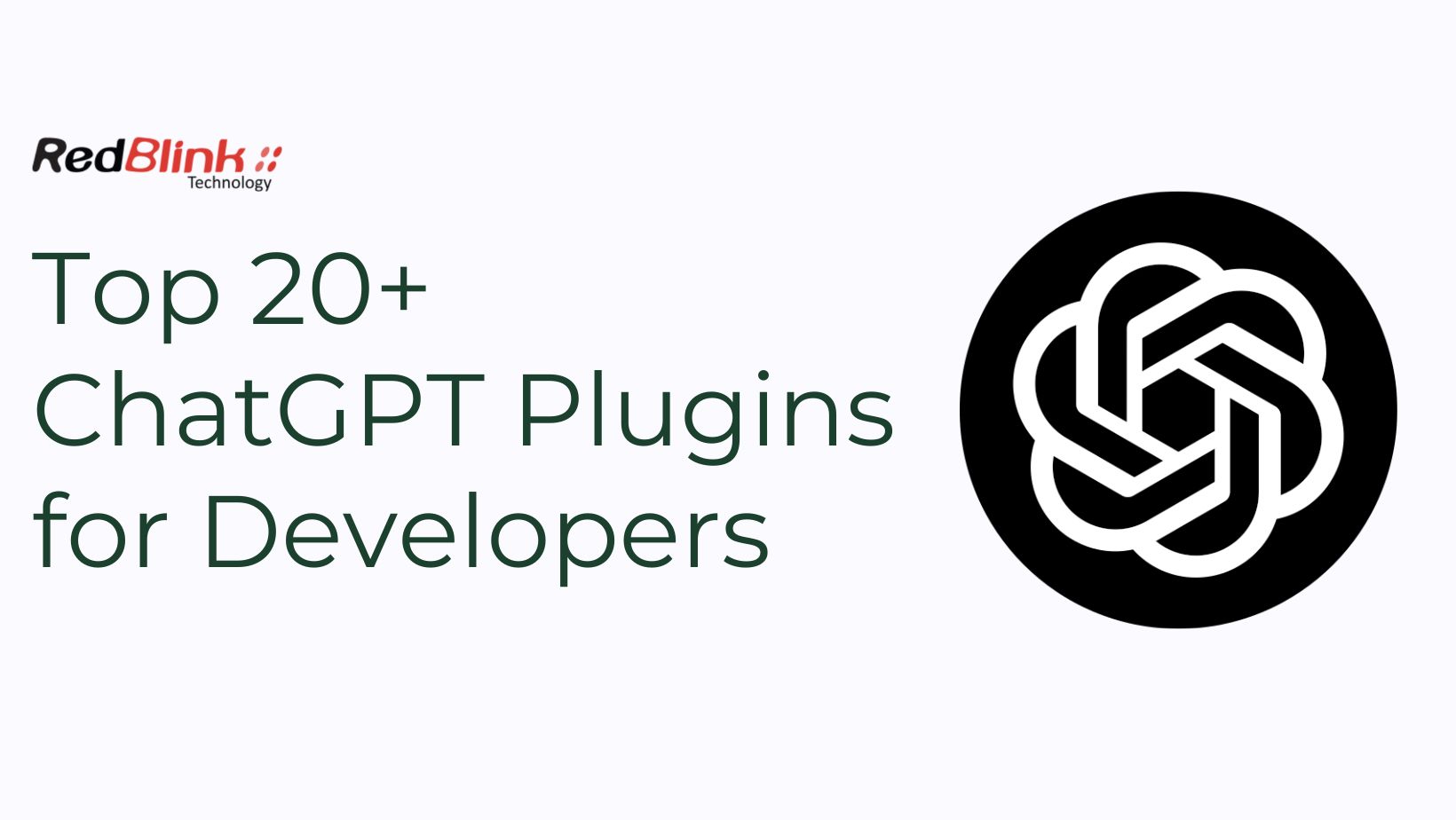
They're designed to streamline workflows, enhance decision-making, and elevate your operational efficiency to new heights. But with a myriad of options at your fingertips, how do you navigate this landscape to find the perfect fit for your unique business needs?
This comprehensive guide is tailored for you – the ambitious, the forward-thinkers, the game-changers. We delve into the top 20+ ChatGPT developer plugins, each a masterpiece in its own right, to help you not just meet but exceed your business goals.
Whether you're looking to optimize financial models, manage client interactions, or simply accelerate day-to-day tasks, these plugins are your allies in the journey toward unparalleled success. So, are you ready to transform your business with the power of ChatGPT? Let's embark on this journey together!
ChatGPT plugins, as a part of the burgeoning field of generative AI, are making a monumental impact in the business and development sectors.
Accenture reports that the implementation of generative AI technologies, such as ChatGPT plugins, could free up to 40% of working hours across industries. This shift enables professionals to redirect their focus toward more creative and strategic tasks, thereby enhancing overall efficiency and innovation. As such, the integration of ChatGPT plugins in business workflows is not just a trend; it's a strategic move towards smarter, more efficient, and future-ready operations.
Importance of ChatGPT Plugins in Web Development
ChatGPT plugins serve as essential extensions to the core ChatGPT model, enhancing its capabilities in specific domains or tasks. These plugins, developed by a diverse community of ChatGpt developers and AI enthusiasts, provide a versatile framework allowing ChatGPT to perform a broader range of functions than its standard configuration.
Key Roles of ChatGPT Plugins:
- Functionality Expansion
- Customization
- Efficiency and Productivity
- Learning and Adaptability
Functionality of ChatGPT Plugins:
- Data Processing
- Integration with Tools and Platforms
- Enhanced Interaction
List of Top 20+ ChatGPT Plugins for Developers
1. Code Interpreter
The Code Interpreter plugin empowers developers with the ability to execute code directly within ChatGPT. It acts as a virtual coding playground, allowing you to test code snippets, debug algorithms, and verify functionality without leaving the ChatGPT environment.
Whether you're a seasoned coder or a beginner, this plugin simplifies code experimentation and problem-solving.
Industry Use:
This plugin finds applications across various industries, including:
- Software Development: For testing and validating code snippets.
- Education: As an interactive tool for teaching and learning programming concepts.
- Data Science: For quick data analysis and visualization.
2. WebDev
Web development is a dynamic field, and the WebDev plugin serves as your real-time assistant. It provides insights, tips, and solutions related to web development, ensuring that you stay updated with the latest trends, best practices, and techniques. From responsive design to cross-browser compatibility, WebDev is your go-to resource for web development projects.
Industry Use:
The WebDev plugin is particularly valuable in industries such as:
- Web Development Agencies: For staying ahead in web design and development.
- E-commerce: To optimize online shopping platforms for a seamless user experience.
- Digital Marketing: For creating and managing web content and campaigns.
3. Code Runner
Code Runner is another versatile plugin that allows developers to run code in multiple programming languages without leaving the ChatGPT environment. It provides a unified coding and execution experience, enabling you to test and evaluate algorithms, functions, and scripts efficiently.
Industry Use:
This plugin is beneficial across various industries, including:
- Software Development: For quick code testing and prototyping.
- Academia: As an educational tool for teaching and demonstrating programming concepts.
- Data Analysis: For running data processing and analysis scripts.
4. Codecademy
The next developer ChatGPT plugin is Codecademy, a renowned online platform for learning coding skills, and the Codecademy plugin brings its interactive lessons and coding challenges directly to ChatGPT users. Whether you're a beginner or looking to expand your coding knowledge, this plugin offers a convenient way to enhance your programming skills.
Industry Use:
The Codecademy plugin is valuable in industries such as:
- Education and E-learning: For online coding courses and tutorials.
- Technology Startups: To upskill team members in coding and development.
- Freelance Development: As a resource for continuous learning and skill improvement.
5. AskYourCode
AskYourCode is your coding companion within ChatGPT. It's designed to provide accurate and prompt answers to your coding-related questions. Whether you're stuck on a code error, need guidance on syntax, or require assistance with algorithms, this plugin offers a reliable source of coding expertise.
Industry Use:
This plugin is useful in industries such as:
- Software Development: For on-the-fly coding assistance and debugging.
- Tech Support: To provide quick and accurate responses to coding-related customer queries.
- Coding Bootcamps: As a learning aid for coding bootcamp participants.
6. ChatWithGit
ChatWithGit simplifies Git operations by providing an intuitive interface within ChatGPT. It allows developers to manage Git repositories, create branches, commit changes, and collaborate seamlessly with team members. Whether you're new to version control or a Git pro, this plugin streamlines your Git-related tasks.
Industry Use:
The ChatWithGit plugin is valuable in industries such as:
- Software Development: For efficient version control and collaborative coding.
- Tech Startups: To facilitate Git-based project management and team collaboration.
- Open Source Communities: As a user-friendly entry point for contributing to open-source projects.
7. Wolfram Alpha
Moving forward, Wolfram Alpha is a computational knowledge engine with vast capabilities in mathematics, science, and data analysis. The Wolfram Alpha plugin allows you to harness its power directly within ChatGPT. You can perform complex calculations, solve mathematical equations, and access a wealth of scientific data and knowledge.
Industry Use:
This plugin is particularly useful in industries such as:
- Academia: For scientific research, calculations, and educational purposes.
- Engineering: To solve intricate engineering problems and simulations.
- Finance: For quantitative analysis and financial modeling.
8. Zapier
Zapier is another name in the list of ChatGPT developer plugins. It is an automation platform that connects various apps and services. The Zapier plugin allows you to automate workflows and integrate ChatGPT with your favorite tools and applications. It simplifies repetitive tasks and enhances productivity by enabling data and action automation.
Industry Use:
This plugin is valuable in industries such as:
- Marketing: For automating marketing campaigns and lead generation processes.
- E-commerce: To streamline order processing, inventory management, and customer communication.
- Project Management: For automating project-related tasks and collaboration workflows.
9. Prompt Perfect
Crafting effective prompts is essential when interacting with ChatGPT. The Prompt Perfect plugin assists you in formulating precise and context-aware prompts for specific tasks and queries. It guides constructing prompts that yield accurate and relevant responses from ChatGPT.
Industry Use:
This plugin is valuable in industries such as:
- Customer Support: To formulate accurate and helpful responses to customer inquiries.
- Academic Research: For crafting research queries and obtaining relevant information.
10. Link Reader
Research is a fundamental aspect of development, and the Link Reader plugin simplifies this process. It allows ChatGPT to extract and analyze web content, making information retrieval and research more efficient. You can provide links to articles, blog posts, or resources, and the plugin will summarize key insights from those sources.
This plugin is valuable in industries such as:
- Report Generation: For gathering information and summarizing content for reports.
- Market Research: To extract insights from industry reports and news articles.
- Academic Research: For quickly summarizing research papers and academic articles.
11. HTTP Webhooks
HTTP Webhooks enable you to create custom webhooks for automating tasks and receiving notifications. It's a valuable tool for building event-driven workflows. You can configure webhooks to trigger specific actions when certain events occur, enhancing the automation capabilities of ChatGPT.
Industry Use:
This plugin is valuable in industries such as:
- E-commerce: For automating order processing and inventory updates.
- IT Operations: To receive real-time notifications for system alerts and incidents.
- Project Management: For automating task assignments and project updates.
12. Aaron Code Review
Code quality is paramount in software development, and the Aaron Code Review plugin offers expert code reviews and suggestions to enhance the quality of your code. It helps you identify and rectify issues, adhere to coding standards, and improve the overall robustness of your software.
Industry Use: This plugin is valuable in industries such as:
- Software Development: For ensuring code quality and compliance with best practices.
- Quality Assurance: To perform code reviews and ensure software reliability.
- Cybersecurity: For identifying vulnerabilities and security risks in code.
13. AskTheCode
Understanding code is vital for effective development, and the AskTheCode plugin provides detailed code explanations. It helps you gain insights into your projects by breaking down code step by step and explaining its functionality and logic. Whether you're deciphering complex algorithms or learning from code examples, this plugin offers clarity.
Industry Use: This plugin is valuable in industries such as:
- Education: For teaching programming concepts with clear code explanations.
- Software Development: To understand and modify existing codebases effectively.
- Technical Writing: For creating code documentation and tutorials.
14. CoderPad
CoderPad is a versatile coding environment that seamlessly integrates with ChatGPT. It provides a collaborative space for coding interviews, technical assessments, and pair programming. Developers can write and execute code, share their screens, and collaborate in real-time, making it an ideal tool for technical evaluations.
Industry Use: This plugin is valuable in industries such as:
- Tech Hiring: For conducting technical interviews and assessments.
- Education: To facilitate coding lessons and collaborative learning.
- Software Development: For pair programming and code review sessions.
15. AskYourDatabase
The AskYourDatabase plugin enables ChatGPT to query databases and retrieve information in real time. It's a powerful tool for data-driven decision-making and information retrieval. Developers can request specific data, generate reports, and analyze database content directly within ChatGPT.
Industry Use:
This plugin is valuable in industries such as:
- Data Analytics: For querying and analyzing databases to extract valuable insights.
- E-commerce: To retrieve product information and manage inventory data.
- Healthcare: For accessing patient records and medical data securely.
16. Checkmarx CheckAI
Checkmarx CheckAI is a code analysis and security plugin that assesses the security of your code and applications. It identifies vulnerabilities, potential risks, and security gaps in your codebase. By leveraging AI-powered analysis, it helps developers proactively address security concerns.
Industry Use: This plugin is valuable in industries such as:
- Cybersecurity: For detecting and mitigating security vulnerabilities in software.
- Finance: To ensure the security and integrity of financial applications.
- Government and Defense: For safeguarding critical systems and data.
17. CreatiCode Scratch
CreatiCode Scratch is a creative coding and prototyping plugin. It allows developers and designers to experiment with code and visual elements, creating interactive and visually engaging applications. It's a versatile tool for building interactive web content and prototypes.
Industry Use:
This plugin is valuable in industries such as:
- Web Design: For creating interactive and visually appealing web elements.
- Digital Marketing: To develop engaging landing pages and advertisements.
- Entertainment and Gaming: For prototyping interactive game mechanics.
18. CodeCast Wandbox
CodeCast Wandbox is a real-time collaborative coding and debugging environment that integrates seamlessly with ChatGPT. It enables multiple developers to code together, share their screens, and collaborate on coding tasks in real-time. It's an invaluable tool for pair programming and team-based development projects.
Industry Use:
This plugin is valuable in industries such as:
- Software Development: For collaborative coding sessions and code review.
- Remote Work: To facilitate remote pair programming and coding collaboration.
- Tech Support: For real-time debugging and assistance.
19. AutoInfra1
AutoInfra1 is an infrastructure as code (IaC) automation plugin. It allows you to define, deploy, and manage cloud infrastructure using code. Whether you're provisioning servers, configuring networks, or managing cloud resources, AutoInfra1 streamlines the IaC process, making it more efficient and error-free.
Industry Use:
This plugin is valuable in industries such as:
- Cloud Computing: For automating cloud resource provisioning and management.
- DevOps: To streamline infrastructure automation in continuous integration and continuous deployment (CI/CD) pipelines.
- E-commerce: For scaling cloud infrastructure during peak traffic periods.
20. Coq Checker - Check Coq Code
Coq Checker is a specialized plugin for Coq, an interactive proof assistant for higher-order logic and formal verification. It assists developers in verifying the correctness of Coq code and formal proofs. Whether you're working on formal methods, theorem proving, or software verification, this plugin is an essential tool.
Industry Use:
This plugin is valuable in industries such as:
- Academia: For formal methods research and teaching.
- Aerospace and Defense: To ensure the correctness of safety-critical software.
- Blockchain and Cryptography: For formally verifying cryptographic algorithms.
21. Retrieval Plugin by ChatGPT
The Retrieval Plugin enhances ChatGPT's information retrieval capabilities. It allows ChatGPT to search and retrieve specific information from external sources, expanding its knowledge and providing more accurate and context-aware responses.
Industry Use:
This plugin is valuable in industries such as:
- Customer Support: For retrieving up-to-date information and responding to customer queries.
- Research and Development: To access the latest research papers and articles.
Essential Skills for ChatGPT Plugin Developers
These experts are well-versed with:
- Natural Language Processing (NLP),
- Deep Learning, Machine Learning,
- Text Processing,
- Algorithm Development,
- Chatbot Development,
- Neural Networks,
- Transfer Learning,
- Cloud Computing,
- Communication Skills,
- Problem-solving, and
- Critical Thinking
Want to Launch Your Own ChatGPT Plugin?
Elevate your tech game and stay ahead of the curve! With AI consulting and generative AI development company like RedBlink, creating your own ChatGPT plugin is not just a dream, but a reality.
Our team of skilled ChatGPT developers and Machine learning engineers are ready to bring your unique ideas to life, ensuring your application stands out in the competitive digital landscape. Harness the power of advanced AI and offer your users an unparalleled experience. Ready to dive more into generative AI? Learn how to build your own generative AI solutions.
So, what are you waiting for??? Hire ChatGPT developers today to beat your rivals with the latest technology!
Hire LLaMA Developers in 24 Hrs - Llama 2 Code Generation
In the rapidly evolving landscape of machine learning development and software development, Code Llama emerges as a game-changer. This revolutionary large language model (LLM) is not just a theoretical concept but a practical tool . In this article, we'll delve into the intricacies of Llama model Code Generation software, its features, and its transformative impact on the tech industry.
What is Code Llama?
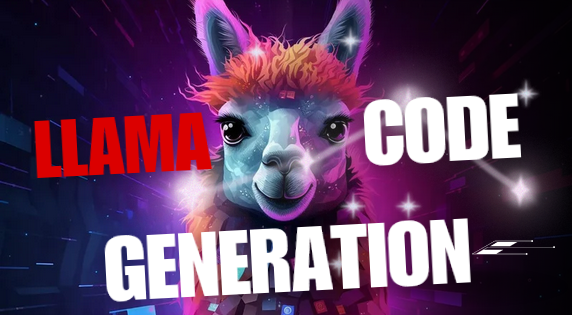
Code Llama is a state-of-the-art Large Language Model (LLM) open-access versions of Llama 2 designed to generate code as well as natural language about code. It's a versatile tool that caters to a wide array of programming languages and is free for both research and commercial use. The model is a breakthrough in the realm of automated code generation, offering a seamless experience for developers and researchers alike.
Helpful Links
- https://huggingface.co/blog/codellama#code-completion
- Code Alpaca: An Instruction-following LLaMA Model trained on code generation instructions
- Request access to the next version of Llama
- Download code llama research Paper
LLAMA 2 Code Generation - Features and Performance
When it comes to performance, Code Llama sets a new standard. It excels in generating code for multiple languages including Python, C++, Java, PHP, C#, TypeScript, and Bash. The model comes in three variants: the foundational model, a Python-specialized model, and an instruction-following model. These models are available in different sizes, ranging from 7 billion to 34 billion parameters, offering a scalable solution for various needs. One of the unique features of Code Llama is its ability to perform 'infilling,' where it generates code based on the surrounding context.
LLAMA Code Generation Software Technical Details
Code Llama is trained on a massive dataset comprising 500 billion tokens of code data. The Python-specialized version takes it a step further, trained on an additional 100 billion tokens. While the model is incredibly powerful, it's essential to understand its token context limitations to make the most out of it. Amazon SageMaker JumpStart provides a streamlined platform to discover and deploy Code Llama models. The integration offers a plethora of benefits, including simplified model training and deployment, making it an ideal choice for both novice and seasoned developers.
Llama Code Completion
The 7B and 13B models can be used for text/code completion or infilling. The following code snippet uses the pipeline interface to demonstrate text completion. It runs on the free tier of Colab, as long as you select a GPU runtime.
from transformers import AutoTokenizer
import transformers
import torch
tokenizer = AutoTokenizer.from_pretrained("codellama/CodeLlama-7b-hf")
pipeline = transformers.pipeline(
"text-generation",
model="codellama/CodeLlama-7b-hf",
torch_dtype=torch.float16,
device_map="auto",
)
sequences = pipeline(
'def fibonacci(',
do_sample=True,
temperature=0.2,
top_p=0.9,
num_return_sequences=1,
eos_token_id=tokenizer.eos_token_id,
max_length=100,
)
for seq in sequences:
print(f"Result: {seq['generated_text']}")
This may produce output like the following:
Result: def fibonacci(n):
if n == 0:
return 0
elif n == 1:
return 1
else:
return fibonacci(n-1) + fibonacci(n-2)
def fibonacci_memo(n, memo={}):
if n == 0:
return 0
elif n == 1:
return
Code Llama is specialized in code understanding, but it's a language model in its own right. You can use the same generation strategy to autocomplete comments or general text.
LLAMA Model Code Generation - Examples and Use-Cases
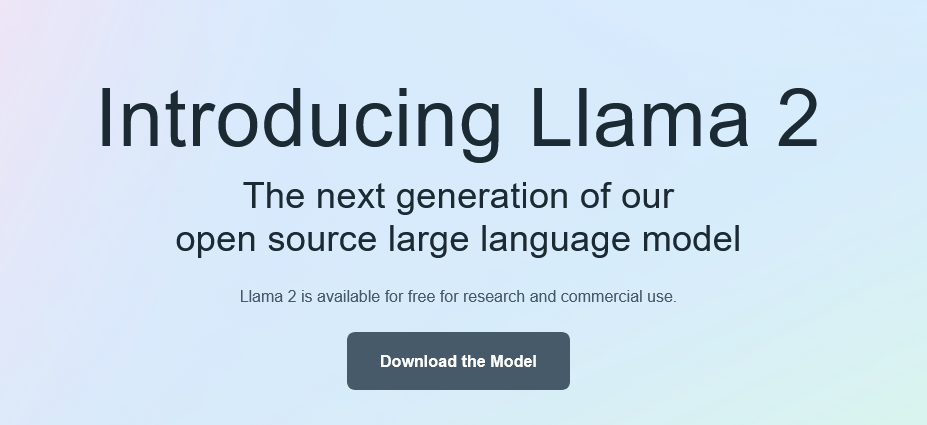
Understanding the capabilities of Code Llama is best done through practical examples and real-world scenarios. This section aims to demonstrate how this powerful tool can be a game-changer in various aspects of software development.
Example 1: Automating Data Analysis in Python
Let's say you're working on a data analysis project that requires repetitive tasks like data cleaning, transformation, and visualization. Code Llama can generate Python code snippets that can handle these tasks efficiently. Here's a simplified example:
# Code generated by Code Llama import pandas as pd import matplotlib.pyplot as plt def clean_data(df): df.dropna(inplace=True) return df def transform_data(df): df['new_column'] = df['old_column'] * 2 return df def visualize_data(df): plt.bar(df['Category'], df['Value']) plt.show()
Example 2: Building a REST API in Java
If you're developing a RESTful API in Java, Code Llama can generate boilerplate code, allowing you to focus on the business logic. Here's how a simple GET endpoint might look:
// Code generated by Code Llama
import org.springframework.web.bind.annotation.GetMapping;
import org.springframework.web.bind.annotation.RestController;
@RestController
public class MyController {
@GetMapping("/hello")
public String helloWorld() {
return "Hello, world!";
}
}
Example 3: Creating a Front-End Component in React
Front-end development often involves creating reusable components. Code Llama can generate a React component for you, like so:
// Code generated by Code Llama
import React from 'react';
const MyComponent = ({ text }) => {
return (
<div>
<h1>{text}</h1>
</div>
);
};
export default MyComponent;
Real-World Applications
- Automated Documentation: Code Llama can generate comments and documentation, making codebases easier to understand and maintain.
- Code Review: By generating example code snippets, Code Llama can serve as a reference during code reviews, helping to identify best practices.
- Rapid Prototyping: For startups and agile teams, Code Llama can accelerate the prototyping phase, allowing for quicker iterations and faster time-to-market.
By integrating Code Llama into your development workflow, you're not just adopting a tool; you're embracing a technology that can significantly expedite and enhance your software development process. Whether you're a solo developer or part of a large team, the use-cases are endless.
Ready for the Future? Hire Llama Code Generation Experts at RedBlink
As we've explored, Code Llama is a transformative tool that can revolutionize your approach to software development and machine learning. But to truly unlock its potential, you need the right expertise. That's where RedBlink comes in.
At RedBlink, we have a team of seasoned ChatGPT developers and Llama Code Generation experts who can help you integrate this cutting-edge technology into your projects. Whether you're looking to automate repetitive tasks, speed up your development cycle, or leverage machine learning capabilities, our Machine learning engineers have the skills and experience to make it happen.
Don't get left behind in the rapidly evolving tech landscape. Take the first step towards future-proofing your business. Contact RedBlink today and discover how our experts can help you make the most of Llama Code Generation.
FAQs About llama Code Generation
Can Llama Generate Code?
Absolutely, Code Llama is specifically designed to generate code across multiple programming languages such as Python, Java, C++, and more. It's a Large Language Model (LLM) that can produce both code and natural language about code, making it a versatile tool for developers and researchers.
Is Code Llama Better Than GPT-4?
Comparing Code Llama and GPT-4 is like comparing apples and oranges; they serve different purposes. While GPT-4 is a general-purpose language model capable of a wide range of tasks, Code Llama is specialized in generating code and natural language about code. If your primary focus is on code generation, Code Llama may offer more targeted capabilities.
What is the Best Code Llama Model?
Code Llama comes in three main variants: the foundational model, a Python-specialized model, and an instruction-following model. The "best" model depends on your specific needs. For general code generation, the foundational model is a good start. If you're working primarily with Python, the Python-specialized model may be more suitable. For tasks that require following specific instructions, the instruction-following model is ideal.
What are the Different Versions of Code Llama?
Code Llama offers models in different sizes, ranging from 7 billion to 34 billion parameters. These versions are designed to offer scalable solutions for various computational needs and project scopes. Whether you're working on a small script or a large-scale application, there's a version of Code Llama that fits your requirements.
Code Llama - Coding With AI - Features & Get Started Guide
Code Llama, introduced by Facebook's parent company Meta, is a significant leap in the realm of coding. It's designed as a Large Language Model (LLM) with a unique ability to utilize text prompts to generate code, complete existing code, create developer notes and documentation, as well as assist in debugging tasks1
The AI-based tool is a code-specialized version of Llama 2, further trained on code-specific datasets to enhance its proficiency in coding tasks. Code Llama supports multiple programming languages including Python, C++, Java, PHP, Typescript (Javascript), C# and Bash, making it a versatile tool for developers across various domains.
What Makes Code Llama Stand Out?
Have you ever stumbled upon a platform that not only educates but engages you in a manner most playful? Code Llama is that rare find, acting as the bridge connecting avid learners to a wealth of knowledge, while making the process enjoyable and interactive. With its innovative approach, it invites a community of inquisitive minds to delve deeper into the realms of coding, all while fostering a lively dialogue.
Code Llama: An AI Co-creator for Code
Code Llama aims to be the ultimate AI co-creator for code, assisting in not just code generation but also in discussing and understanding code. Its state-of-the-art LLM is capable of generating natural language about code, making it easier for developers to discuss and understand code logic3.
Core Essence of Code Llama
Code Generation: Beyond the Basics
Code Llama thrives on its ability to generate code, facilitating a smooth transition from natural language prompts to code snippets. Its advanced algorithms ensure accurate code generation, paving the way for enhanced coding efficiency.
Natural Language Processing: A Dual Interaction
Harness the power of Code Llama's Natural Language Processing (NLP) capabilities to converse about code. It's more than just a coding tool; it's a platform fostering a two-way interaction between code and natural language prompts.
Playground: Your Coding Sandbox
Dive into the Code Llama Playground, a haven for coding enthusiasts. It's an environment that encourages experimentation, fostering a culture of innovation and continuous learning.
Navigating Through the Code Llama Universe: A Comprehensive Overview
Delve deeper into the technical realm of Code Llama with a comprehensive overview of its models. Discover the foundation models, Python specializations, and instruction-following models, each tailored to cater to a broad spectrum of applications23.
Code Llama Online: An Expanse of Learning
Explore the expansive learning environment of Code Llama online, where every query opens the door to a new realm of understanding. Its intuitive platform is designed keeping the user in mind, ensuring a seamless navigation through a plethora of resources available at your fingertips.
Code Llama Playground: Where Ideas Take Flight
The Code Llama Playground is more than just a sandbox; it's a fertile ground where your coding ideas can take root and flourish. This interactive section is designed to spark creativity, allowing you to experiment, iterate, and grow your coding skills in a lively, supportive community.
Code Llama Huggingface: Embracing the Future of Coding
In collaboration with Hugging Face, Code Llama is at the forefront of integrating cutting-edge Generative AI technologies to foster a more enriched learning and interactive experience. This partnership paves the way for an immersive learning journey, embellishing the traditional coding curriculum with a modern, AI-driven twist. Explore the seamless integration of Code Llama with the Hugging Face ecosystem. This collaboration amplifies the coding experience, opening new avenues for code generation and interaction4.
Code Llama GitHub: A Repository of Knowledge
Venture into Code Llama's GitHub repository, a well-organized hub where every code snippet tells a story, every algorithm solves a mystery. It's more than just a storage space; it's a collaborative community of like-minded individuals sharing, learning, and growing together.
Code Llama’s Core Features
- Code Generation: One of the primary features that sets Code Llama apart is its code generation capability. It can create code based on text prompts, aiding developers in speeding up the coding process4.
- Code Completion: Code Llama supports code completion, a feature that helps in automatically completing code segments, saving time and reducing the scope of errors.
- Debugging: With debugging features, Code Llama assists in identifying and fixing code errors, ensuring a smooth coding experience.
- Documentation Generation: It also has the ability to generate developer notes and documentation, a crucial aspect for maintaining code quality and understanding.
- Multilingual Support: The support for prevalent programming languages like Python, C++, Java, and others makes Code Llama a multilingual coding companion.
Getting Started with Code Llama
To get started with Code Llama, the process is streamlined to accommodate both seasoned coders and beginners:
- Access: Code Llama is an open-source tool, making it accessible for commercial and research use. This free access fosters a community of developers who can share, learn, and grow together.
- Ease of Use: With the goal of speeding up workflows and simplifying coding for beginners, Code Llama is crafted to be user-friendly2. Its intuitive design allows easy navigation and utilization of its features.
- Learning Curve: The learning curve for Code Llama is designed to be gradual yet engaging. It offers a playground where coders can experiment, learn, and improve their coding skills.
- Community Support: Being part of the larger Meta ecosystem, Code Llama has a robust community support to assist in the learning and implementation process.
Code Llama Download Access
Developers can request access to Code Llama from the Meta AI webpage. Free for research and commercial usage, Code Llama is being released in three sizes, with 7B, 13B, and 34B parameters respectively. Each model is trained with 500B tokens of code and code-related data. The 7B and 13B base and instruct models have been trained with fill-in-the-middle (FIM) capability, enabling insertion of code into existing code. This supports tasks such as code completion out of the box.
Conclusion: The Future of Coding Interaction
Code Llama is not just a tool; it's a catalyst for fostering a community of innovative minds. As you navigate through its extensive features, you're not just coding; you're engaging in meaningful interactions, each leading to a path of endless learning and exploration.
Code Llama, with its array of features, stands as a monumental stride by Meta in providing a comprehensive tool that caters to the diverse needs of the coding community. Whether you are starting your coding journey or are a seasoned machine learning developers, Code Llama offers a blend of features and support to enhance your coding experience.
References
- VentureBeat1
- DesignRush2
- Meta AI3
- Digit4
Explore the Future with Redblink
Ready to take your coding projects to the next level? At Redblink, we specialize in software and AI development, tailoring solutions to meet your unique needs. Whether you're interested in integrating AI tools like Code Llama into your workflow or looking for a dedicated team to bring your software vision to life, we're here to help.
- Get in Touch: Contact us today for a free consultation. Our AI consultants are ready to understand your needs and propose a tailored solution. Contact Redblink.
- Explore Our Services: Discover how our range of services can accelerate your projects. From AI integration to custom machine learning software development, we have the expertise to drive your ideas to fruition. View Our Services.
- See Our Work in Action: Experience the innovation and technical prowess of Redblink through our project demos. View Code Conductor.
- Stay Updated: Subscribe to our newsletter to stay updated on the latest in AI and software development
At Redblink, we're more than just a development agency; we're your partner in navigating the future of technology. At RedBlink, we specialize in leveraging the power of AI to revolutionize coding. Our team of experienced ChatGPT developers can help you unlock the full potential of Code Llama and take your coding skills to the next level.
OpenTofu vs HashiCorp's Terraform - In Depth Comparison 2024
OpenTofu - An Open Source Alternative to Terraform
In the ever-evolving world of DevOps and Infrastructure as Code (IaC), HashiCorp's Terraform has been a cornerstone. However, recent changes in its licensing have led to the emergence of OpenTofu, a compelling open-source alternative. This article delves into what OpenTofu is, its origins, and how it compares to Terraform.
What is OpenTofu?
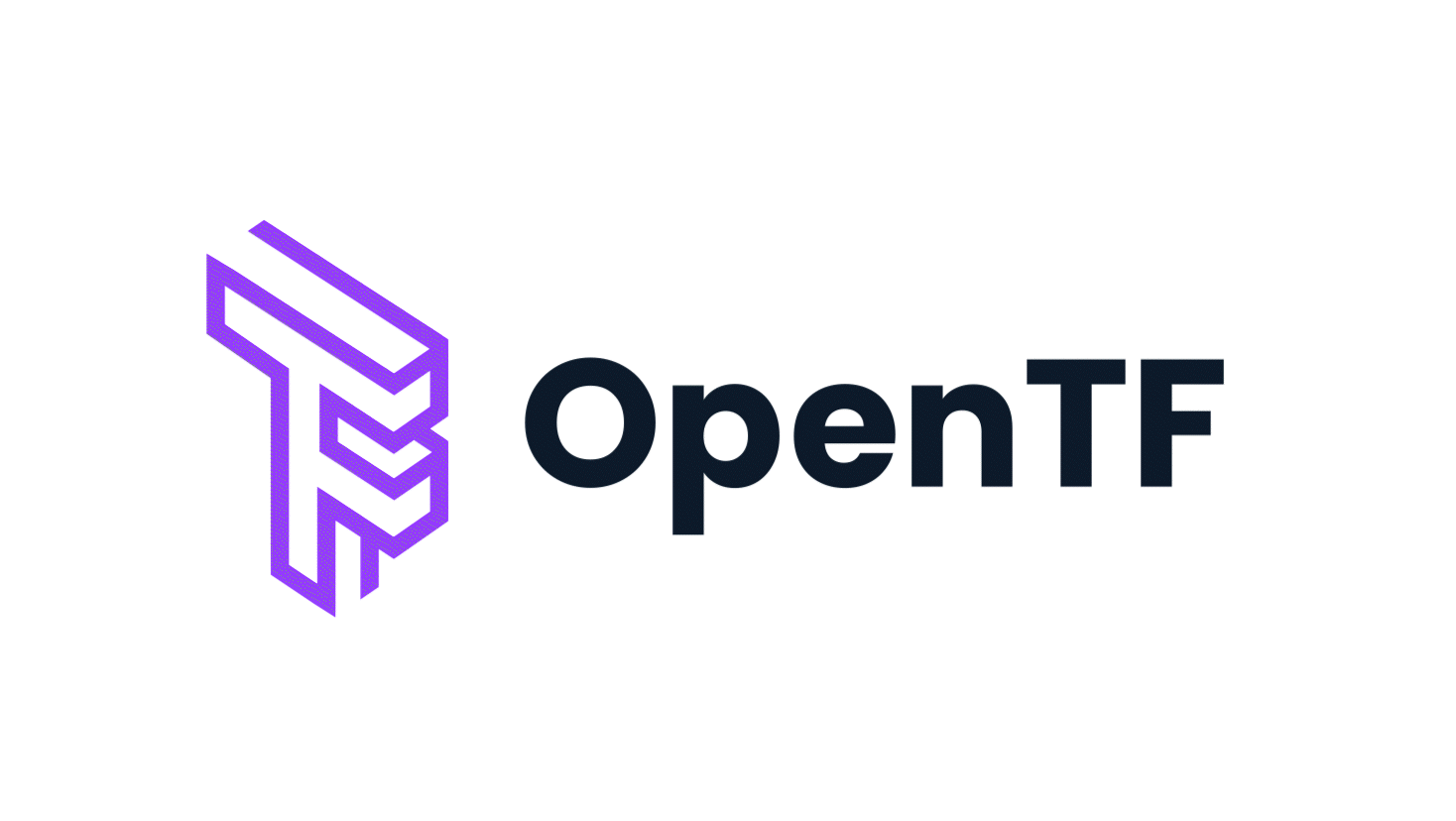
OpenTofu is an open-source version of Terraform, forked from its 1.5.6 version. It aims to be a viable alternative to HashiCorp's Terraform, expanding on its existing concepts and offerings. It is a community-driven response to the recent shift in Terraform's licensing. It aims to preserve the open-source nature of IaC tools.
Why OpenTofu?
The inception of OpenTofu was triggered by Terraform's recent license change from the Mozilla Public License v2.0. OpenTofu serves as an open and community-driven response to this change, ensuring that the essence of open-source in infrastructure management tools is preserved.
Features and Offerings
While OpenTofu is still in its nascent stages, it promises to bring new features and improvements over Terraform. It is managed by a community-driven approach, ensuring that it remains truly open-source.
OpenTofu offers feature parity with Terraform but adds some unique functionalities. It supports a wide range of cloud providers and has a robust plugin architecture.
Licensing and Open-Source Nature
OpenTofu operates under a Mozilla Public License, making it a truly open-source project. It is also part of the Linux Foundation, which ensures a neutral governance model.
Community and Support
OpenTofu has garnered attention from various organizations, including the Linux Foundation. It aims to build a robust community around it to drive its development and adoption.
OpenTofu vs Terraform - Features, Performance, and Case Studies

In the rapidly evolving landscape of Infrastructure as Code (IaC), two names stand out: OpenTofu and Terraform. Dive into the world of infrastructure management tools with an in-depth analysis of OpenTofu and Terraform. Compare their features, performance, and real-world case studies to make an informed decision.
Terraform: A Leading Infrastructure Management Tool
Introduction to Terraform
Terraform, by HashiCorp, has been an industry leader in the IaC space. It provides a declarative language for defining cloud resource configurations.
Key Features and Benefits
Terraform offers a wide array of features, including state management, modularity, and a large ecosystem of providers and modules.
Transition from Open Source to BSL 1.1
Terraform recently transitioned its license from an open-source software license to a Business Source License (BSL) 1.1, causing a stir in the tech community.
Feature Comparison: OpenTofu vs Terraform
Detailed Analysis of Features
Both tools offer state management, modularity, and support for multiple cloud providers. However, OpenTofu aims to improve upon these with community-driven enhancements.
Similarities and Differences
While both tools aim to simplify infrastructure management, OpenTofu focuses more on community contributions and open-source principles.
Performance Evaluation: OpenTofu vs Terraform
Performance Benchmarks
OpenTofu is still in its early stages but shows promise in terms of scalability and performance, matching closely with Terraform in benchmark tests.
Scalability and Efficiency
Both tools are designed to scale with your infrastructure needs, but OpenTofu aims to offer better efficiency through community-driven optimizations.
Real-World Case Studies
OpenTofu in Action
Several organizations have successfully implemented OpenTofu for their infrastructure needs. These case studies highlight its flexibility and performance.
Terraform in the Field
Terraform has been widely adopted across various industries. Its robust features and performance make it a go-to choice for many organizations.
Supporting Quotes
"The inauguration of OpenTofu under the Linux Foundation marks a rapid and significant milestone in our collective journey with this new initiative. It epitomizes the community's unified dedication to unbiased governance, collaborative efforts, and valuable contributions to this pivotal project. We at Redblink are honored to contribute to this meaningful endeavor and stand with the open-source community."
— Paul Dhaliwal, CEO and Founder, Redblink
"The OpenTofu project is solely guided by the aspirations and requirements of the community, devoid of any individual corporate influence."
— Marcin Wyszynski, Core OpenTofu Contributor, CPO at Spacelift
"With OpenTofu, we aim to lay a solid groundwork for Terraform's open-source future. The overwhelming community response has been inspiring. Our roadmap is straightforward—listen, absorb, prioritize, act, and iterate."
— Omry Hay, Core OpenTofu Contributor, CTO at env0
"OpenTofu aims to be what Terraform could have been—a platform that puts the community at the forefront and remains unbiased."
— Sebastian Stadil, Core OpenTofu Contributor, Founder of Scalr
"In the ever-changing tech environment, open source is not just an alternative but a catalyst for innovation and agility. Open source's unique traits—innovation, adaptability, transparency, and teamwork—are often elusive in closed systems. Adopting OpenTofu for our Infrastructure as Code needs aligns with our commitment to these principles. While it's early days, OpenTofu's community-centric approach resonates with our long-term goals and integrates seamlessly with our tech stack. If you're contemplating changes to your enterprise infrastructure, OpenTofu deserves your consideration."
— Mike Sutton, Allianz CIO
"Open source empowers people and organizations with the means to safeguard their digital existence through openness and collective effort. OpenTofu is a monumental stride in this direction. We are confident that OpenTofu will continue to stimulate innovation and a competitive landscape, ultimately serving the end-users' best interests."
— Carlos Clemente, Principal Engineer, ExpressVPN
Pros and Cons of OpenTofu and Terraform
Advantages and Disadvantages
OpenTofu offers the benefit of being a truly open-source tool, while Terraform provides a more mature ecosystem. Each has its own set of challenges and limitations.
Considerations for Choice
Your choice between OpenTofu and Terraform should consider factors like licensing, community support, and specific feature needs.
Recommendations for Choosing the Right Tool
Factors like your organization's open-source policy, the scale of infrastructure, and community support should guide your choice between OpenTofu and Terraform.
Future Outlook and Roadmap
OpenTofu's Roadmap
OpenTofu has a promising future with planned features and community-driven enhancements.
Terraform's Future
Terraform continues to evolve, with HashiCorp announcing new version releases and feature updates.
FAQs
1. Is OpenTofu a completely open-source tool?
Yes, OpenTofu is a completely open-source tool. It operates under the Mozilla Public License and is part of the Linux Foundation, ensuring its open-source nature and neutral governance model.
2. How does the new license change impact the use of Terraform?
The recent license change for Terraform from an open-source software license to a Business Source License (BSL) 1.1 has caused some concerns within the tech community. This change could potentially limit the ways in which Terraform can be used or modified, especially for commercial purposes.
3. Can I migrate from Terraform to OpenTofu easily?
The migration process from Terraform to OpenTofu is designed to be as smooth as possible, given that OpenTofu was forked from Terraform and aims for feature parity. However, it's essential to thoroughly test the migration in a non-production environment first to ensure compatibility and performance.
4. What are some notable organizations using OpenTofu and Terraform for their infrastructure management?
While Terraform has been widely adopted by various industries and organizations due to its maturity and robust feature set, OpenTofu is still relatively new but gaining traction. Several case studies highlight its successful implementation in organizations that prioritize open-source solutions for their infrastructure needs.



